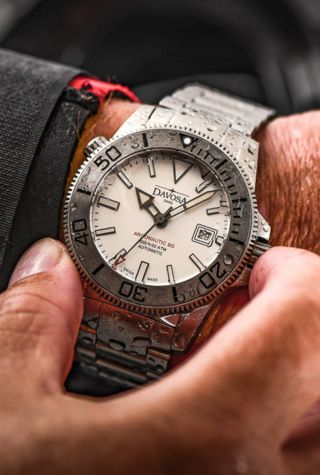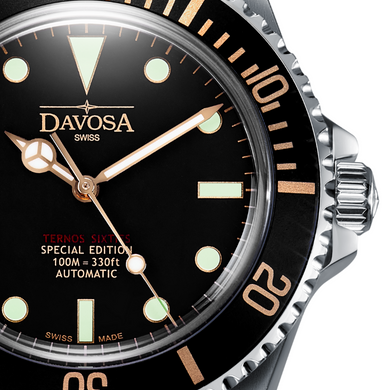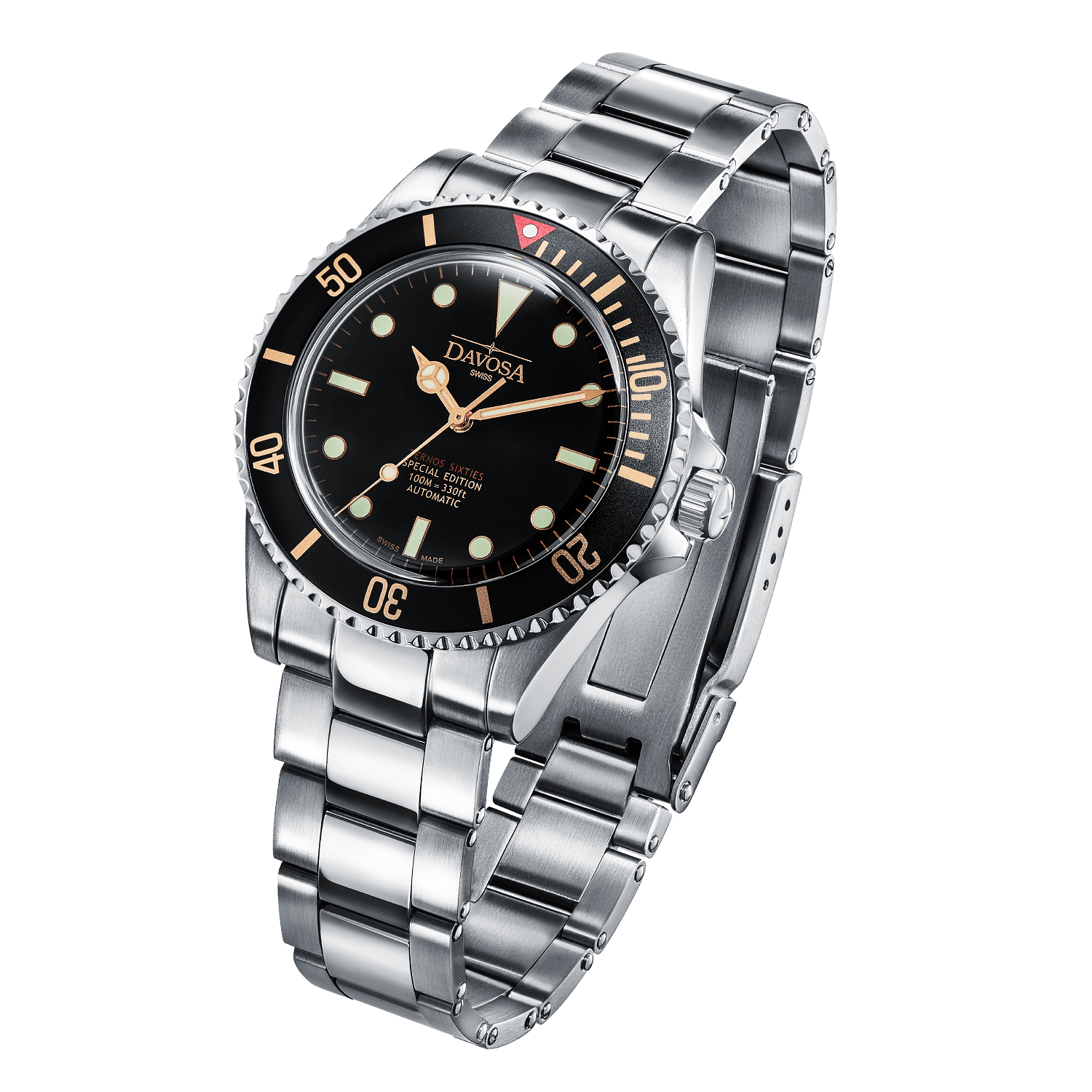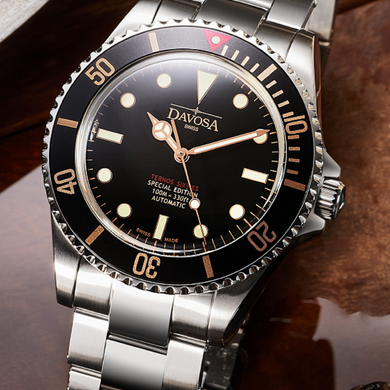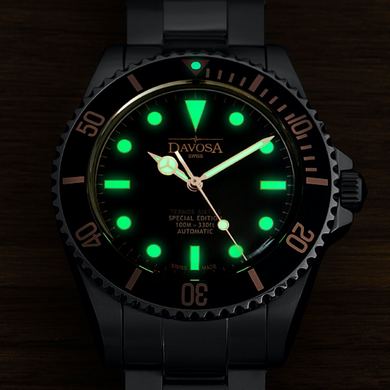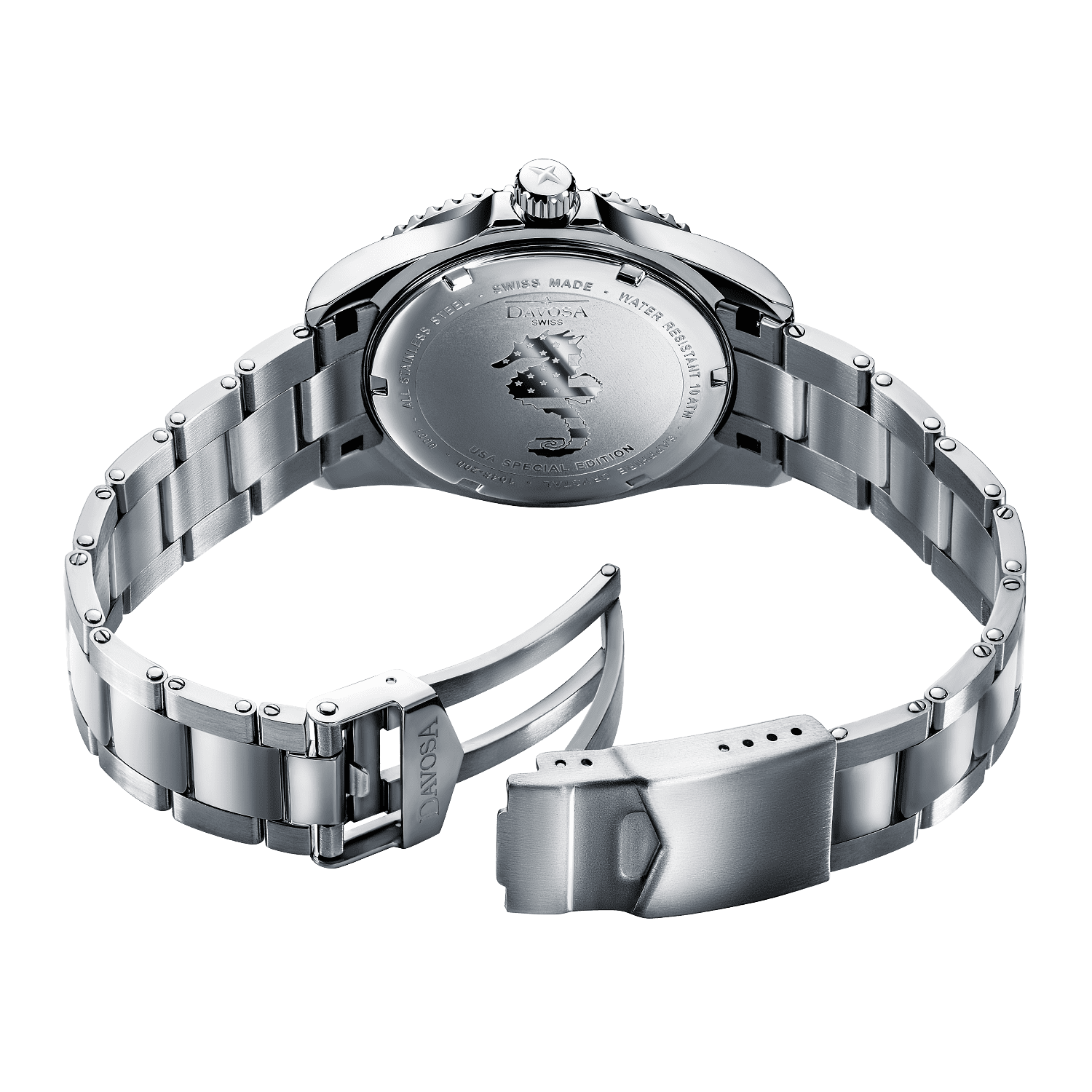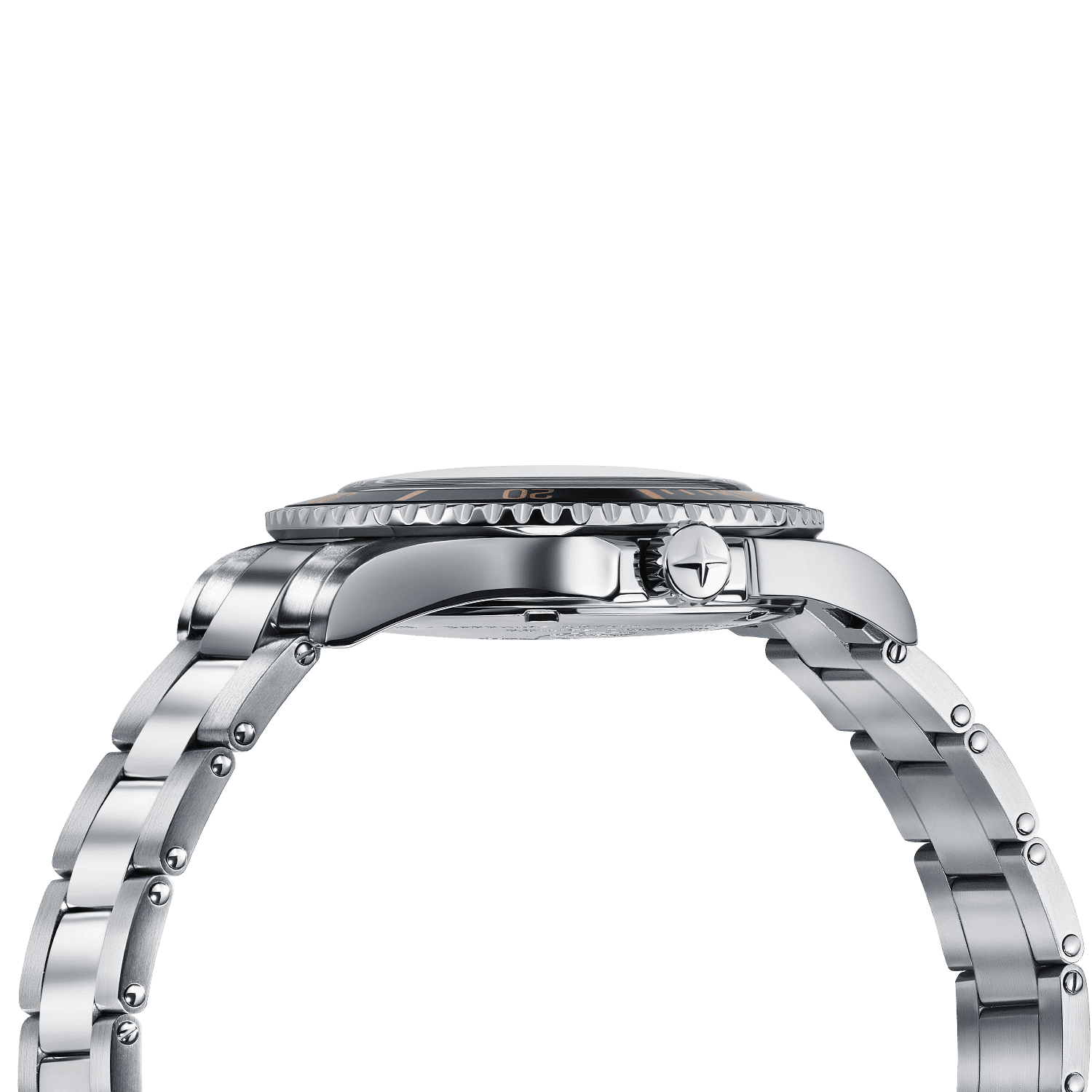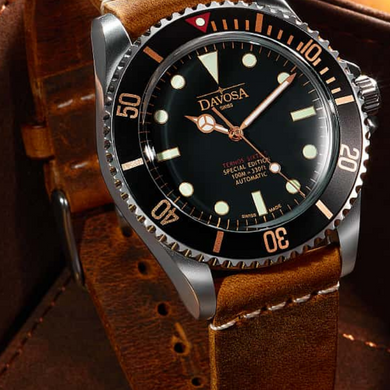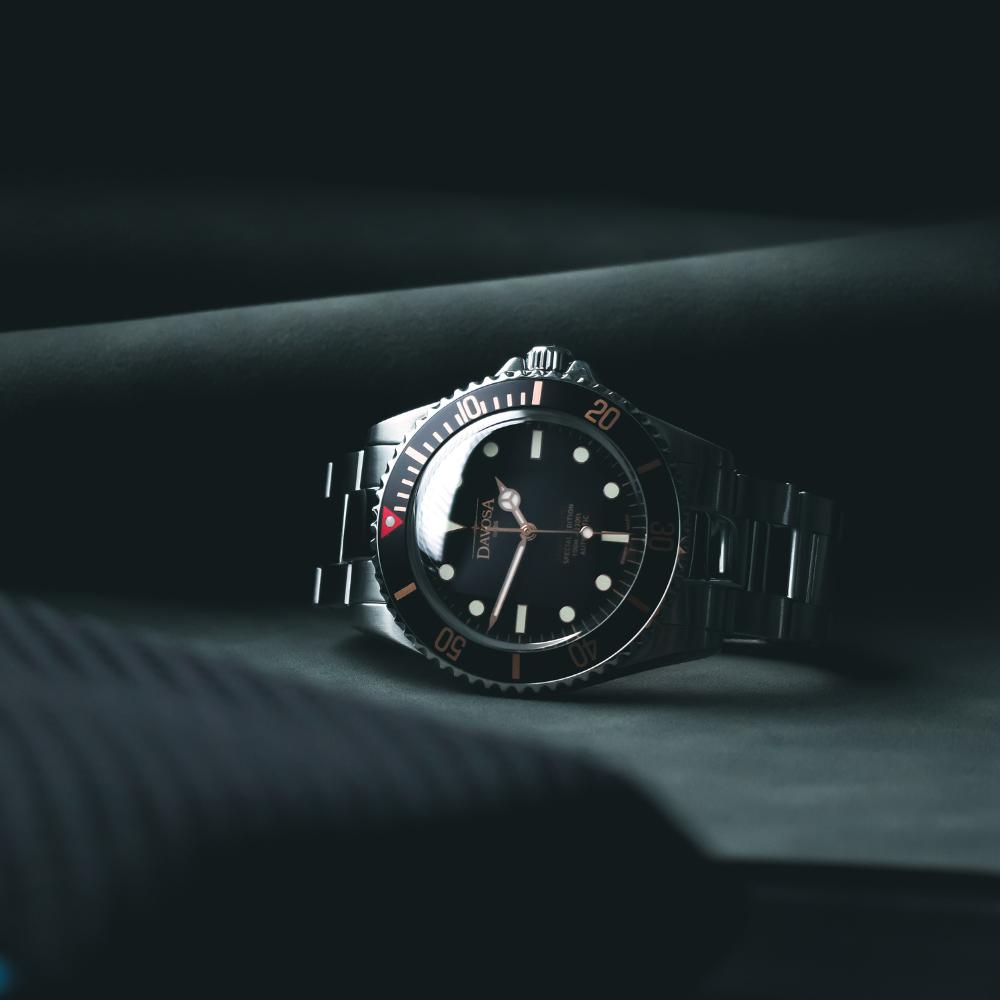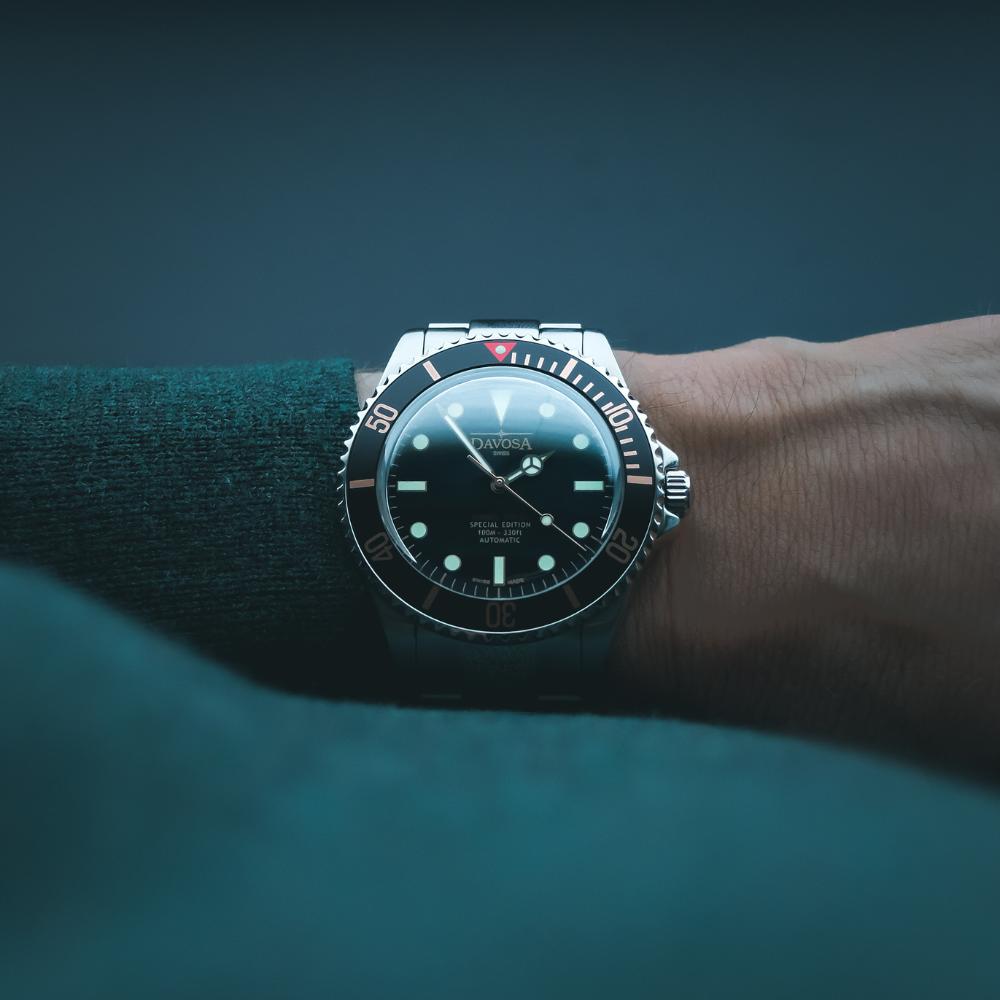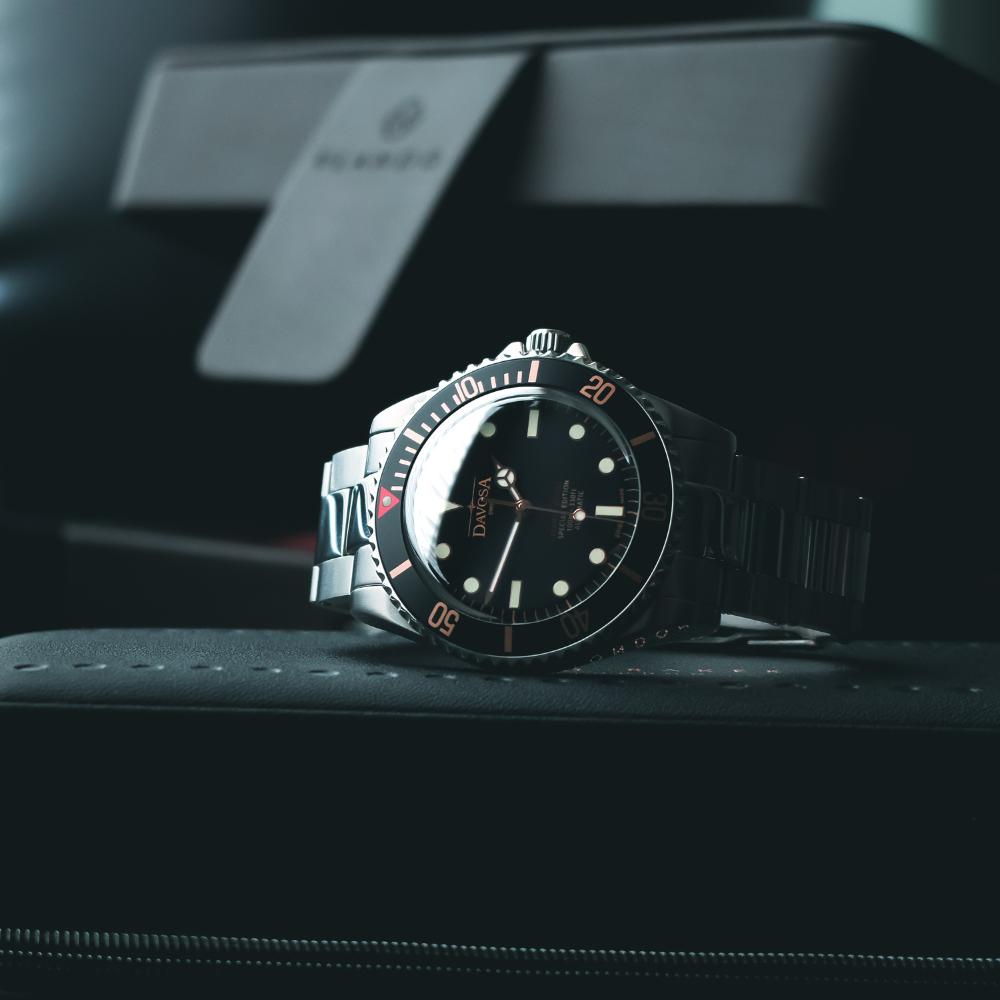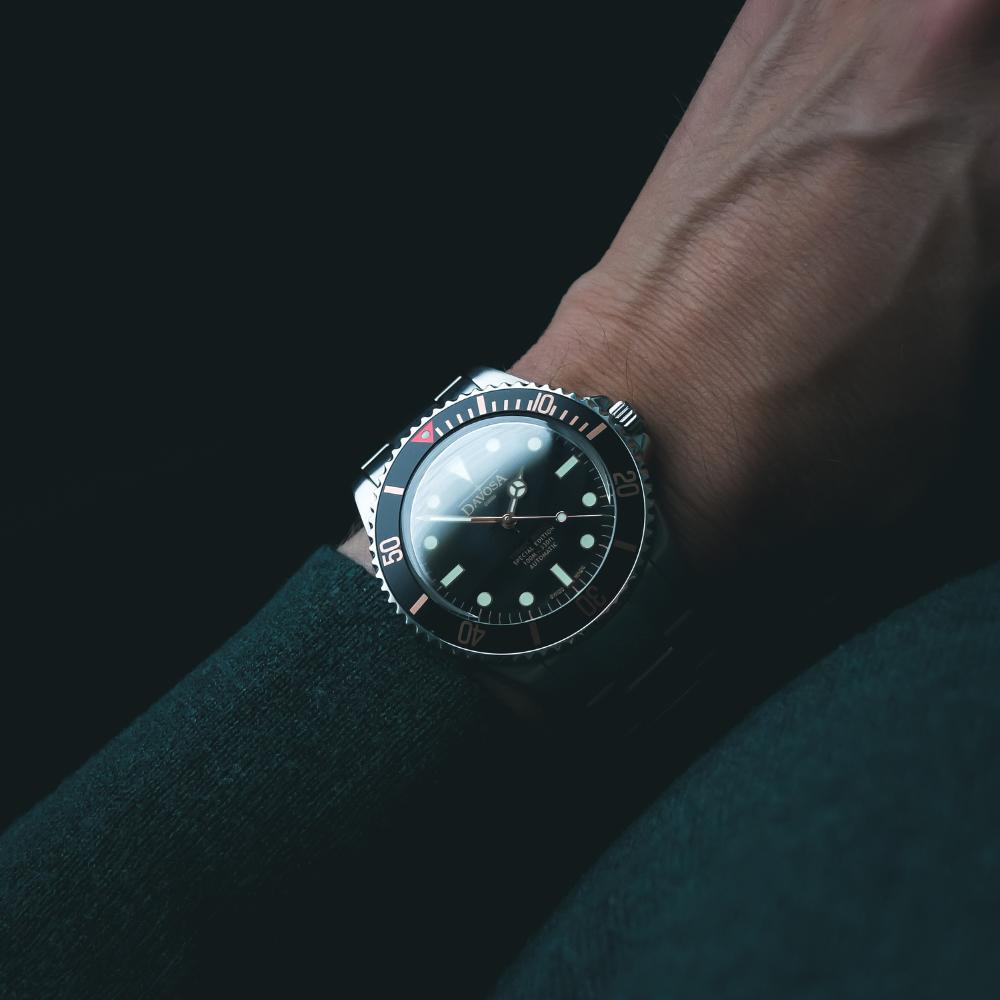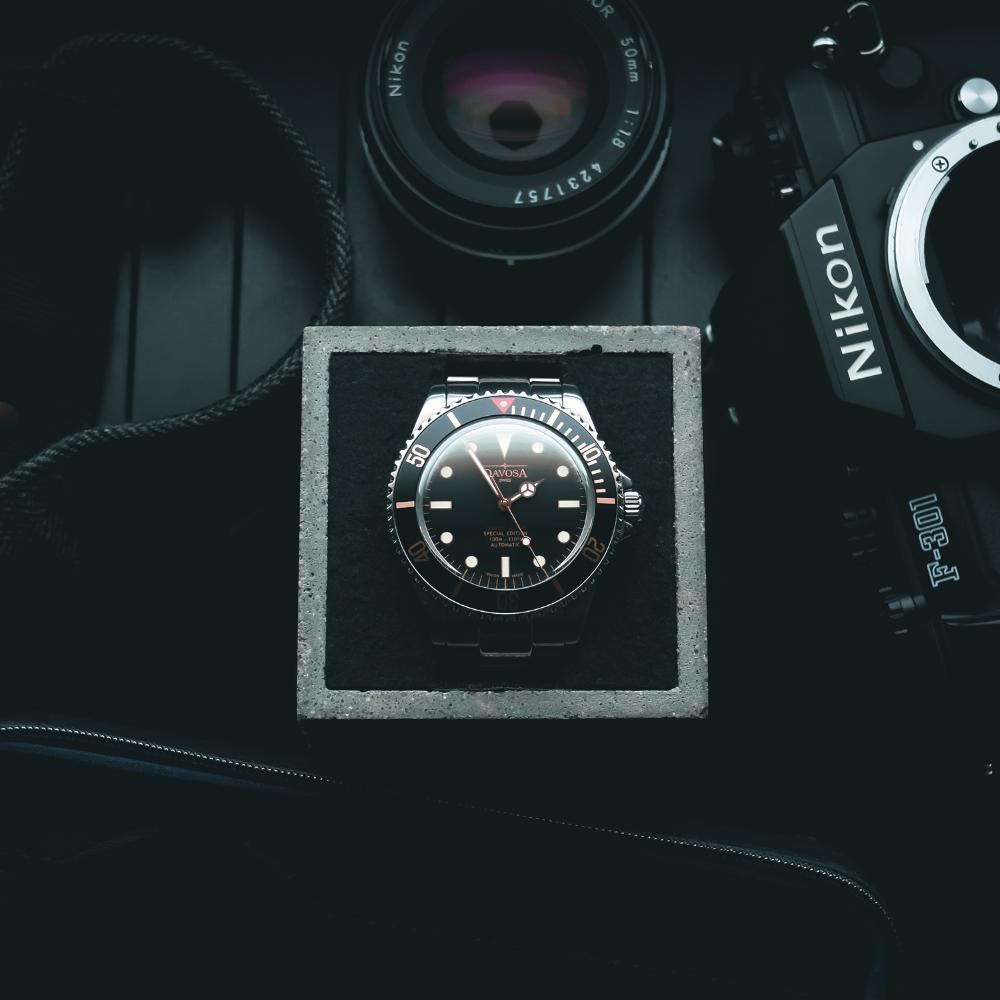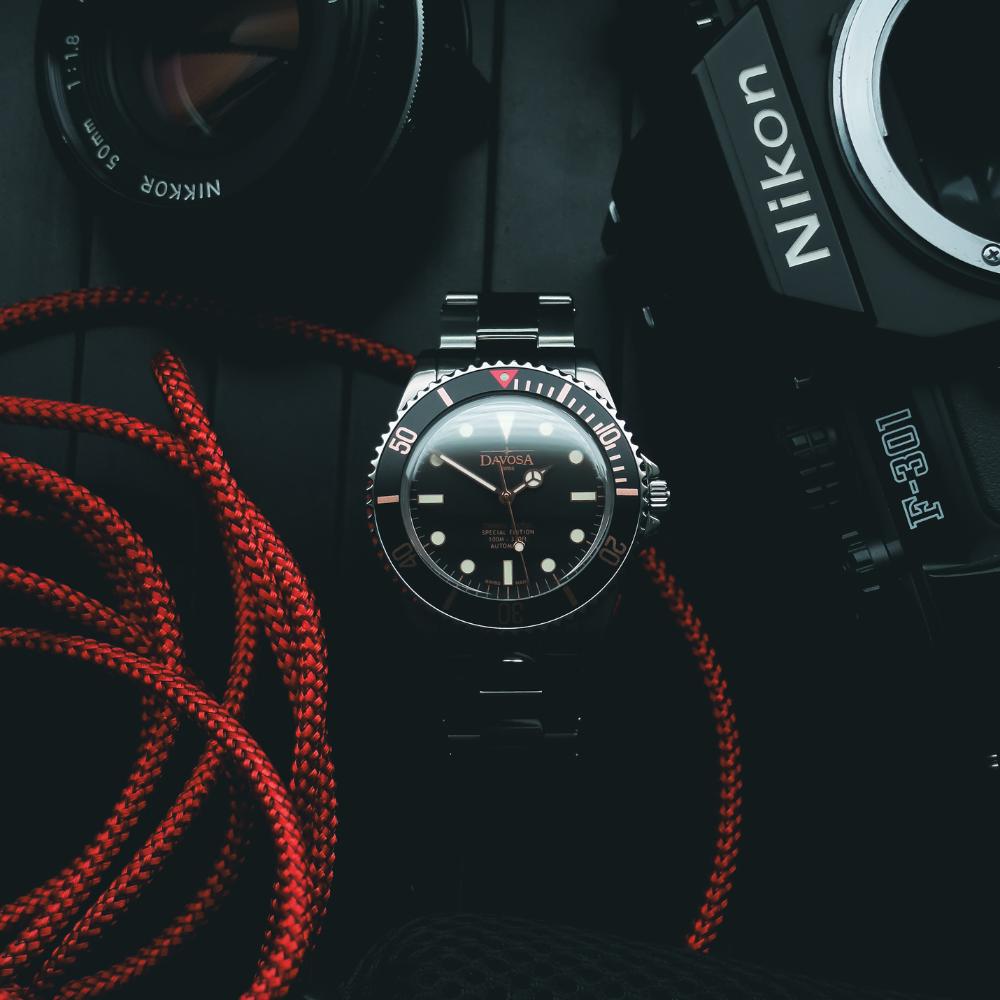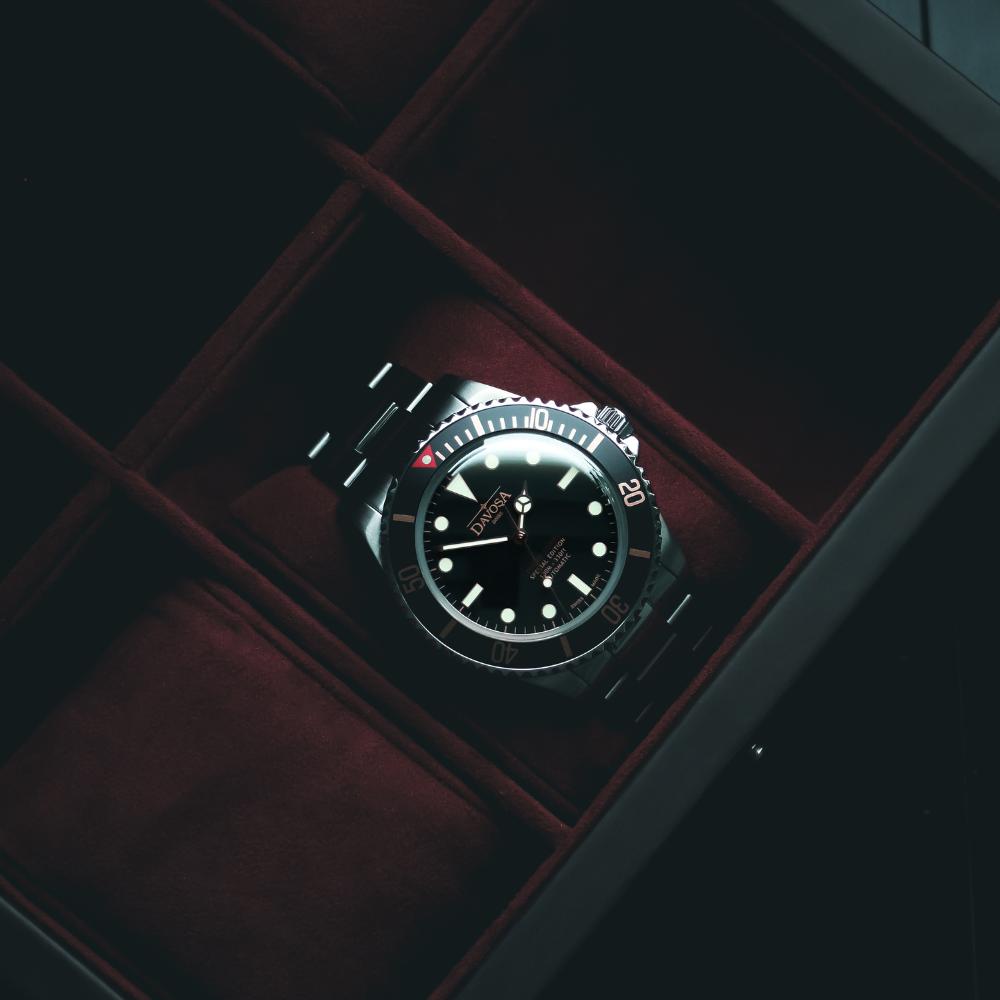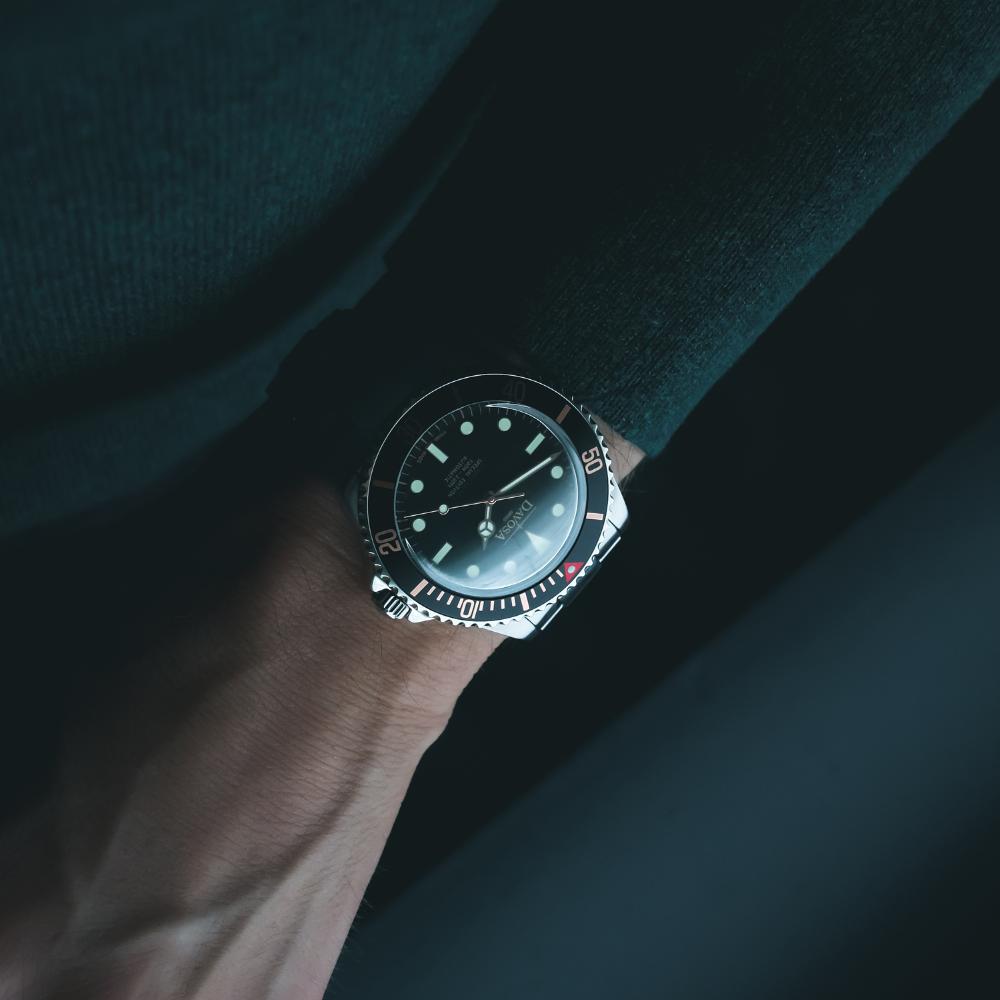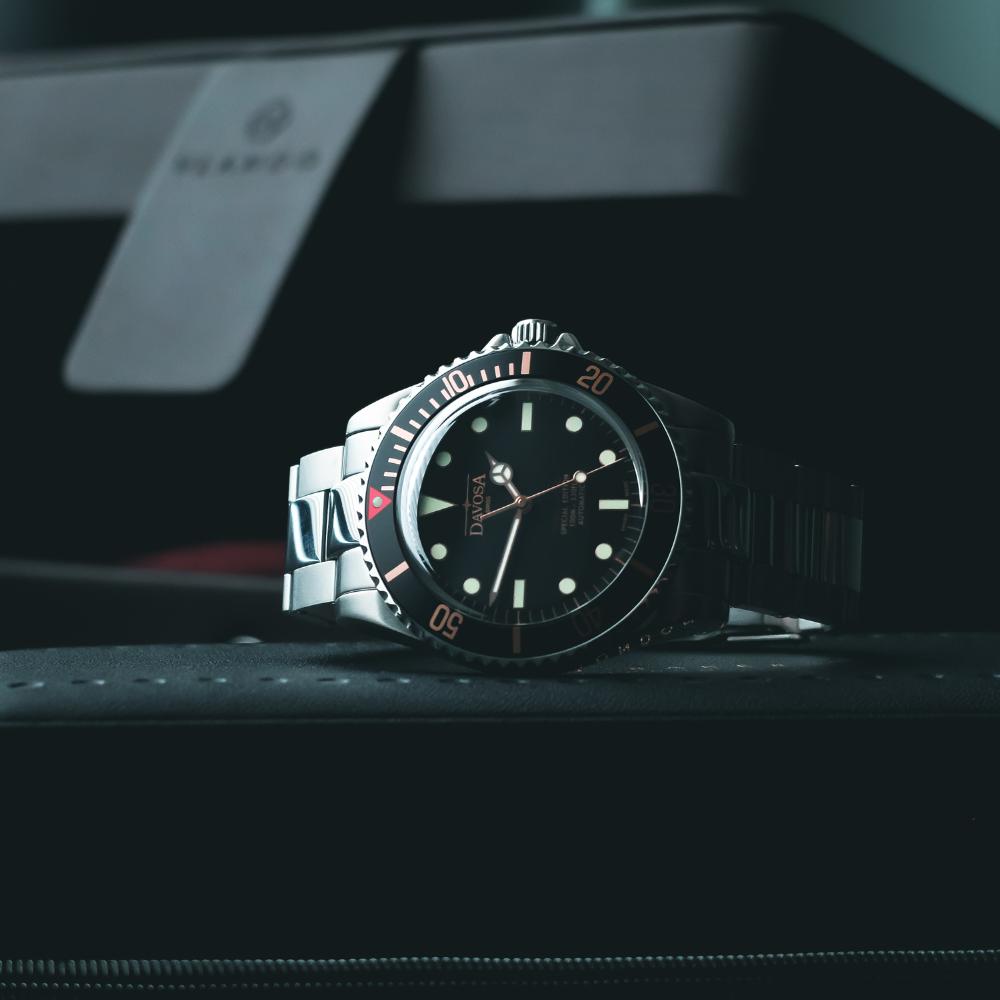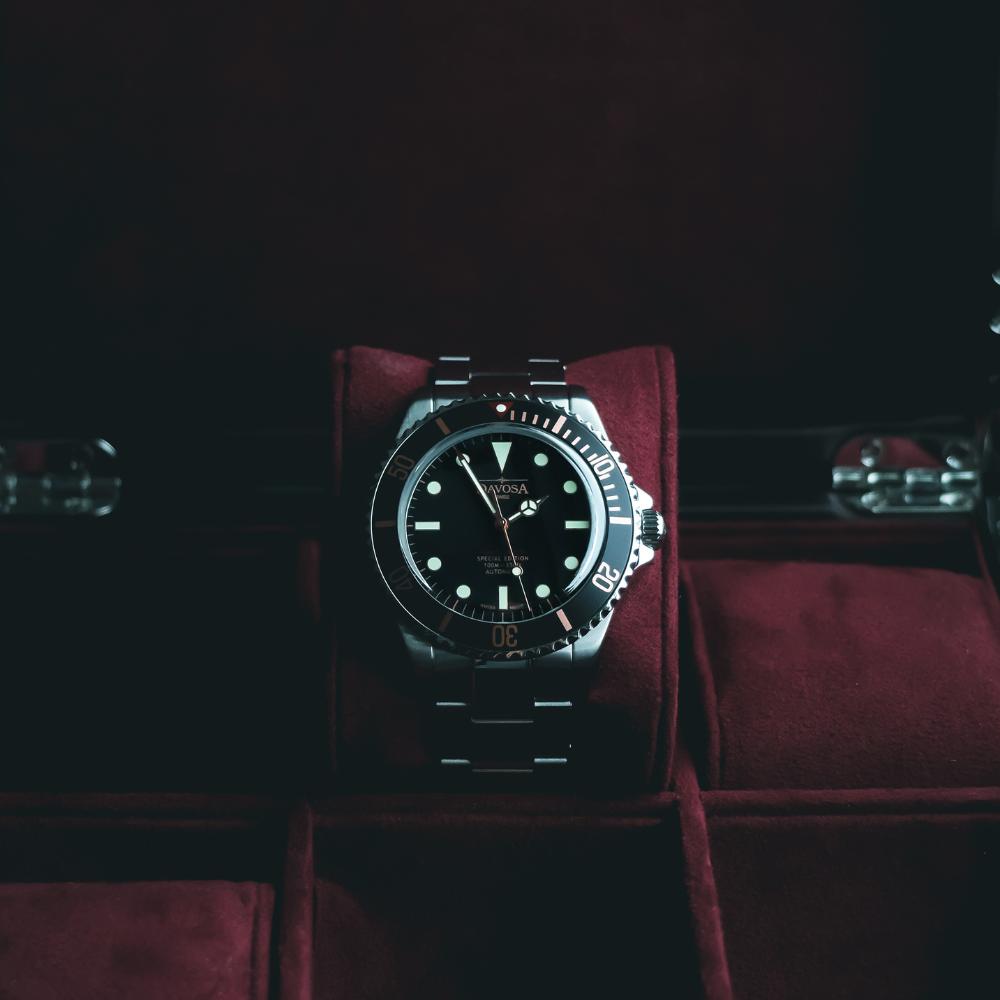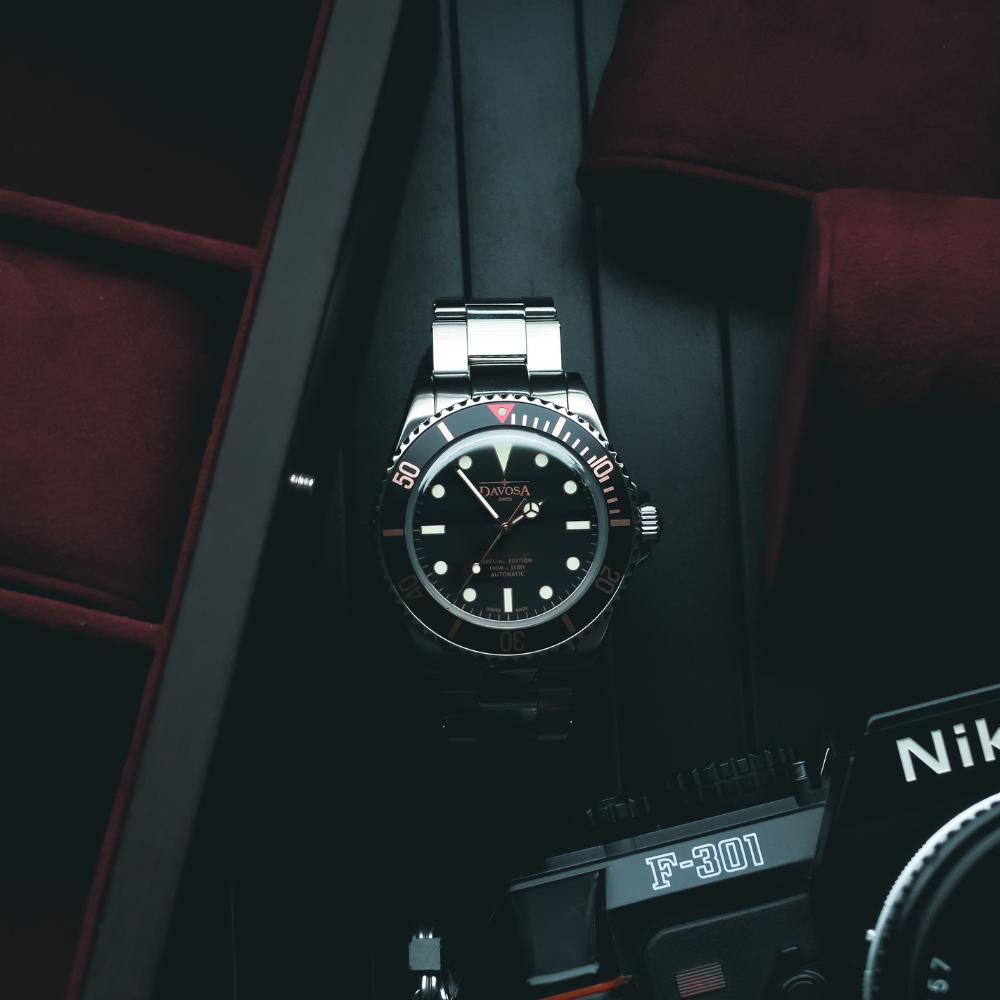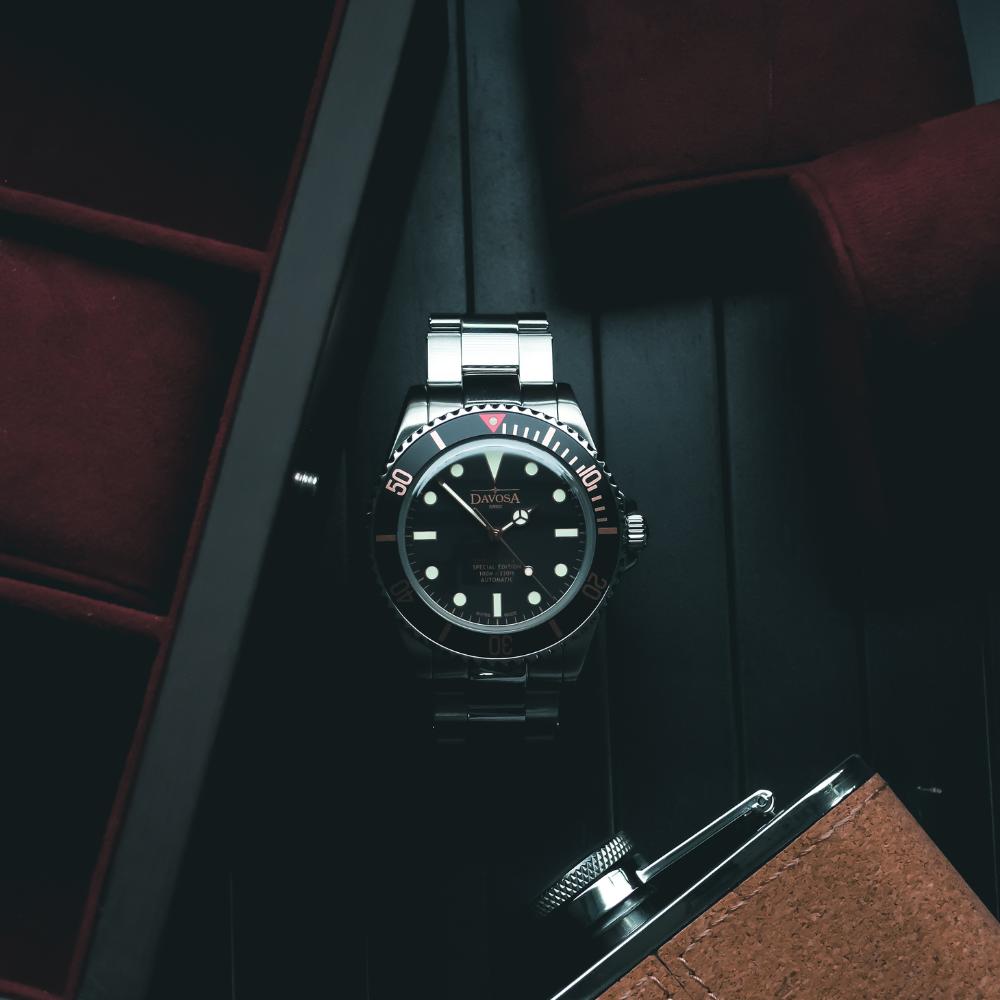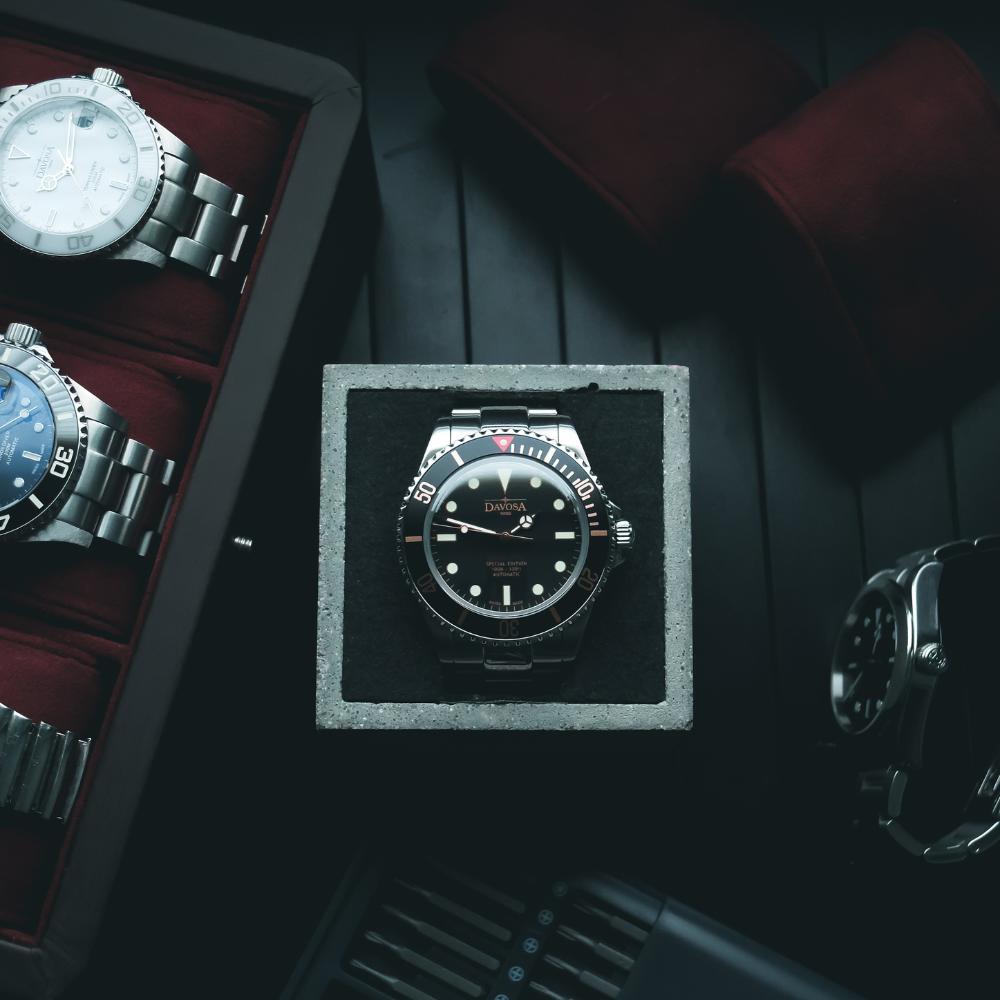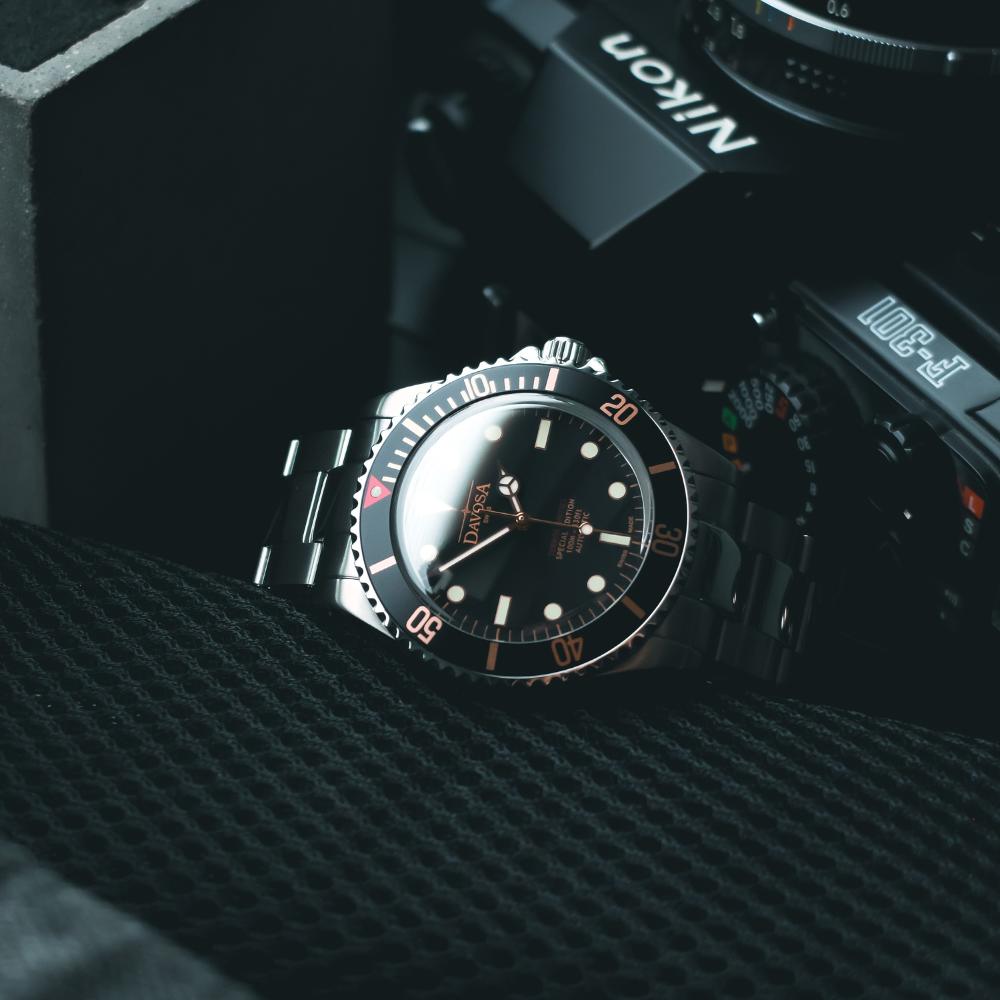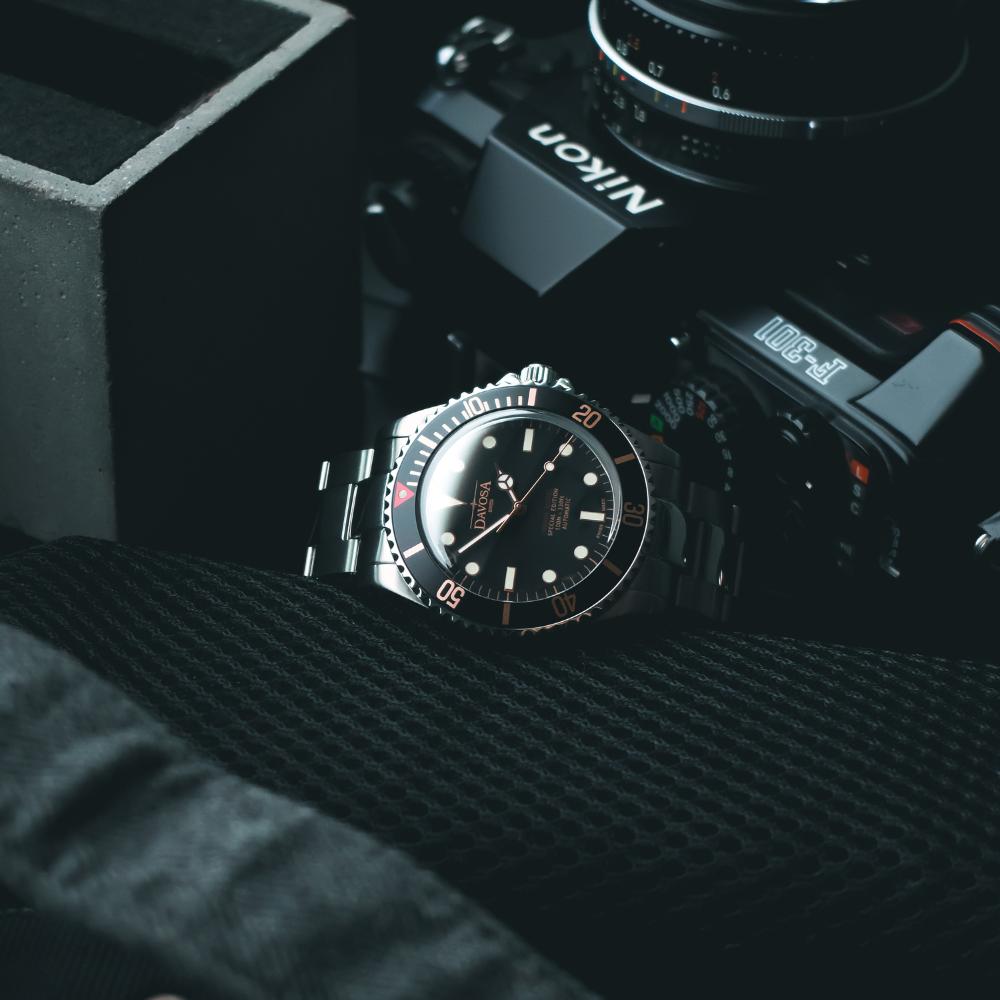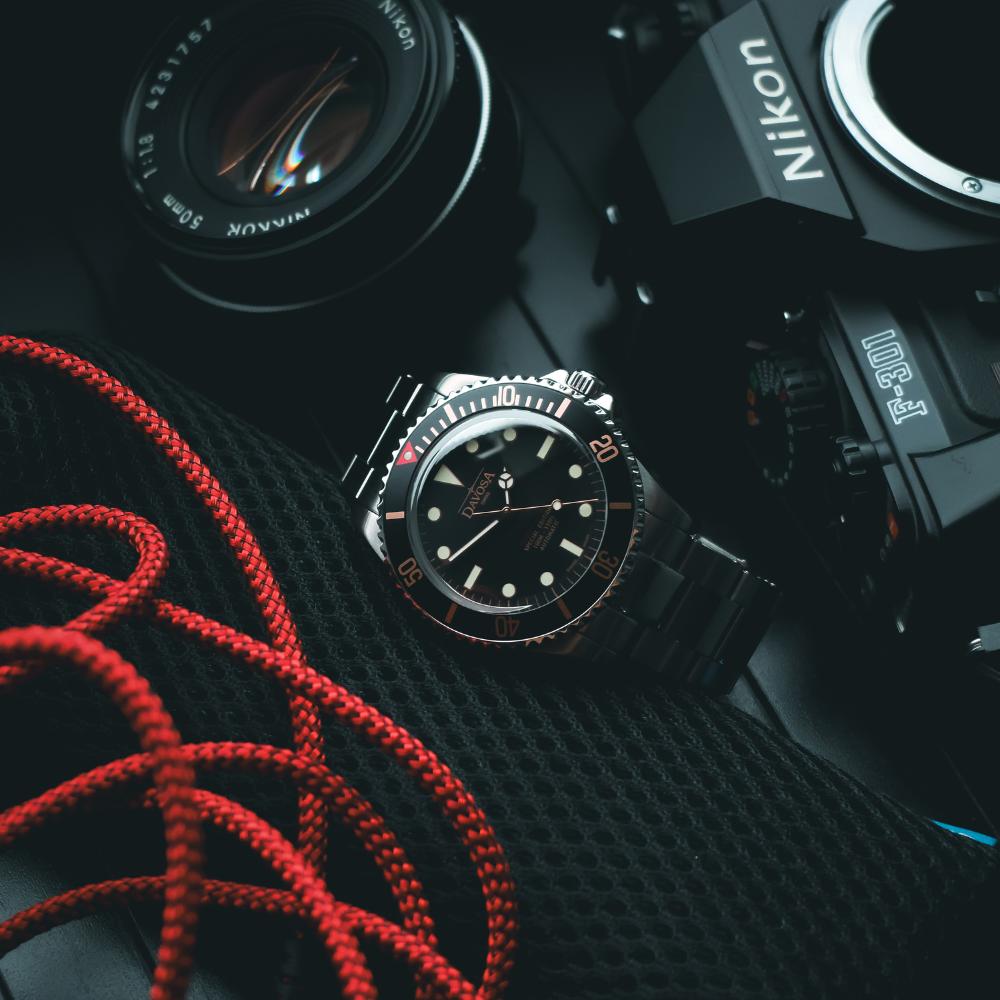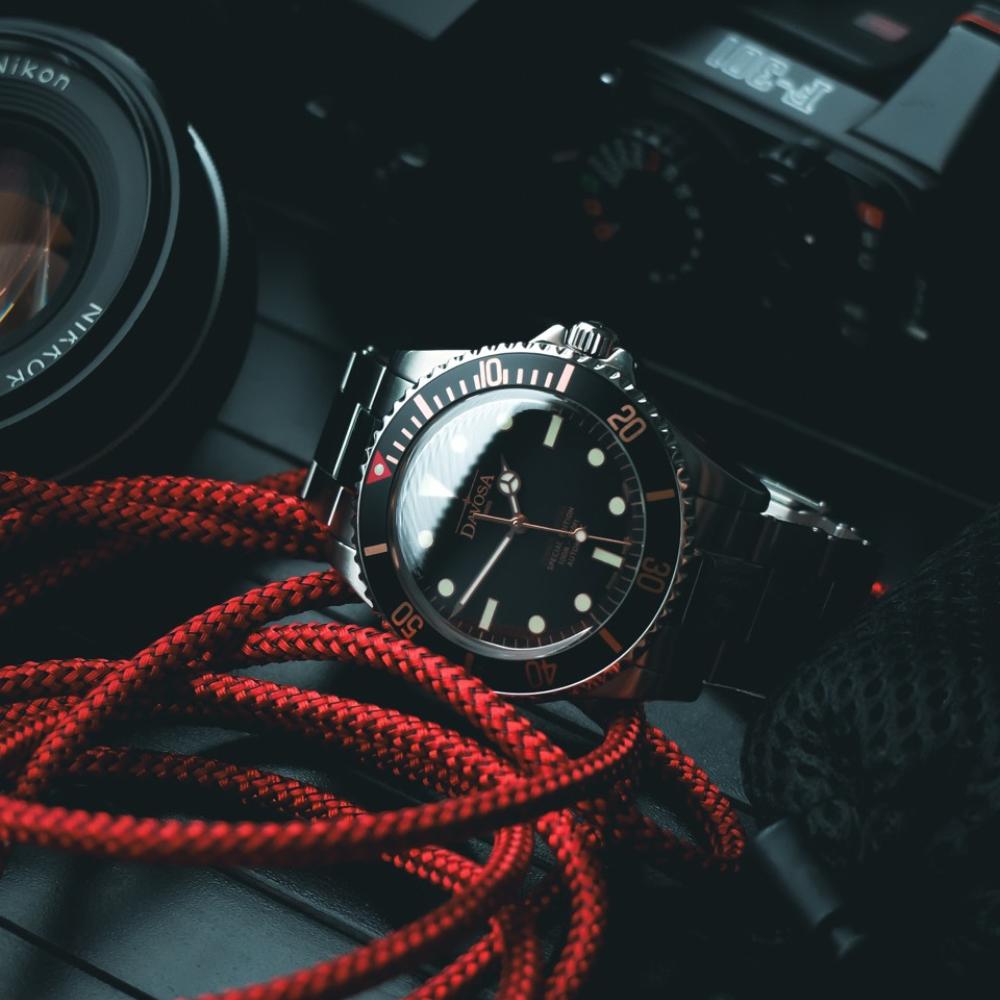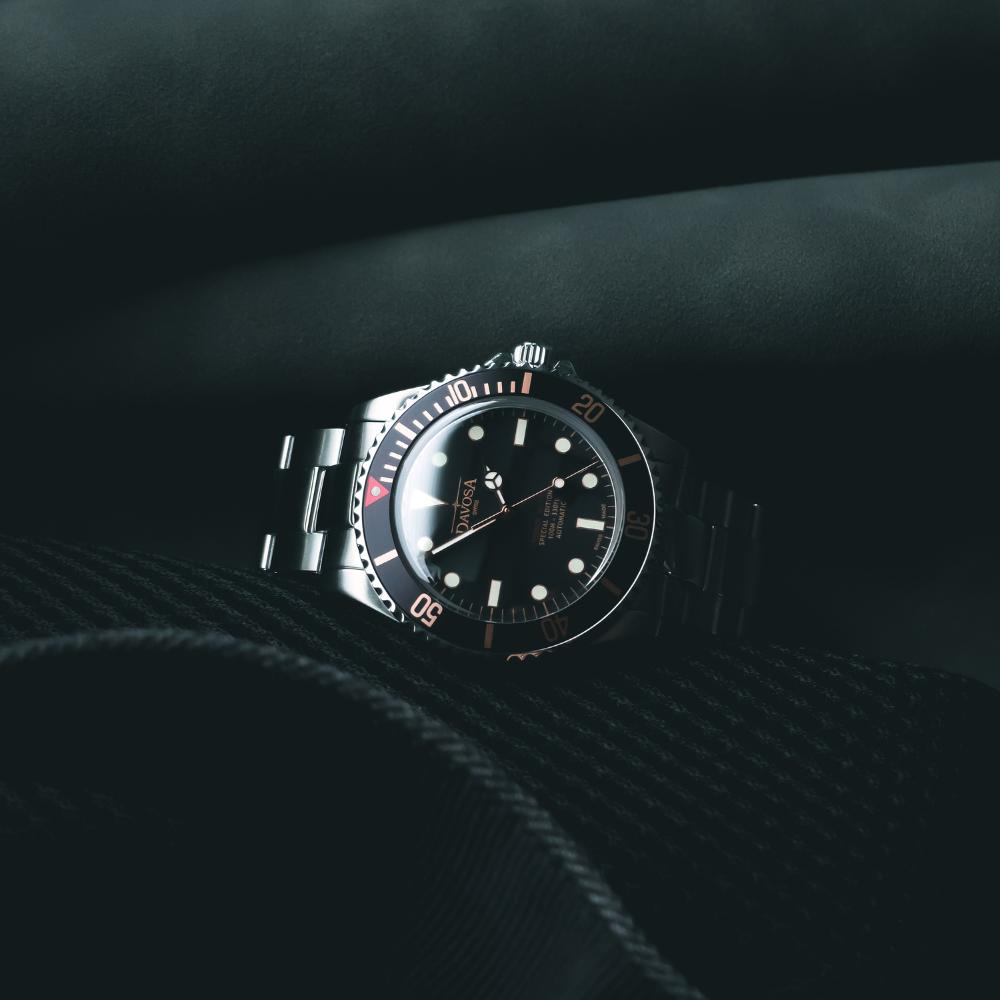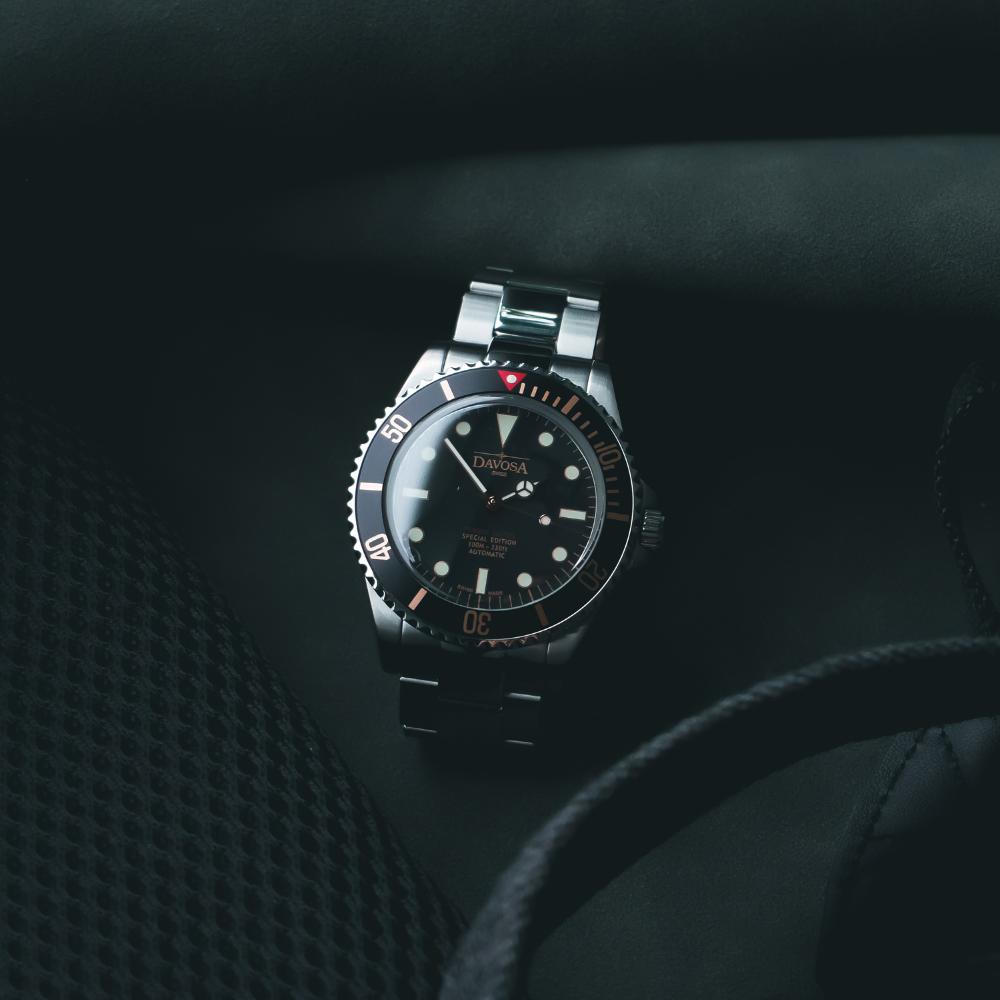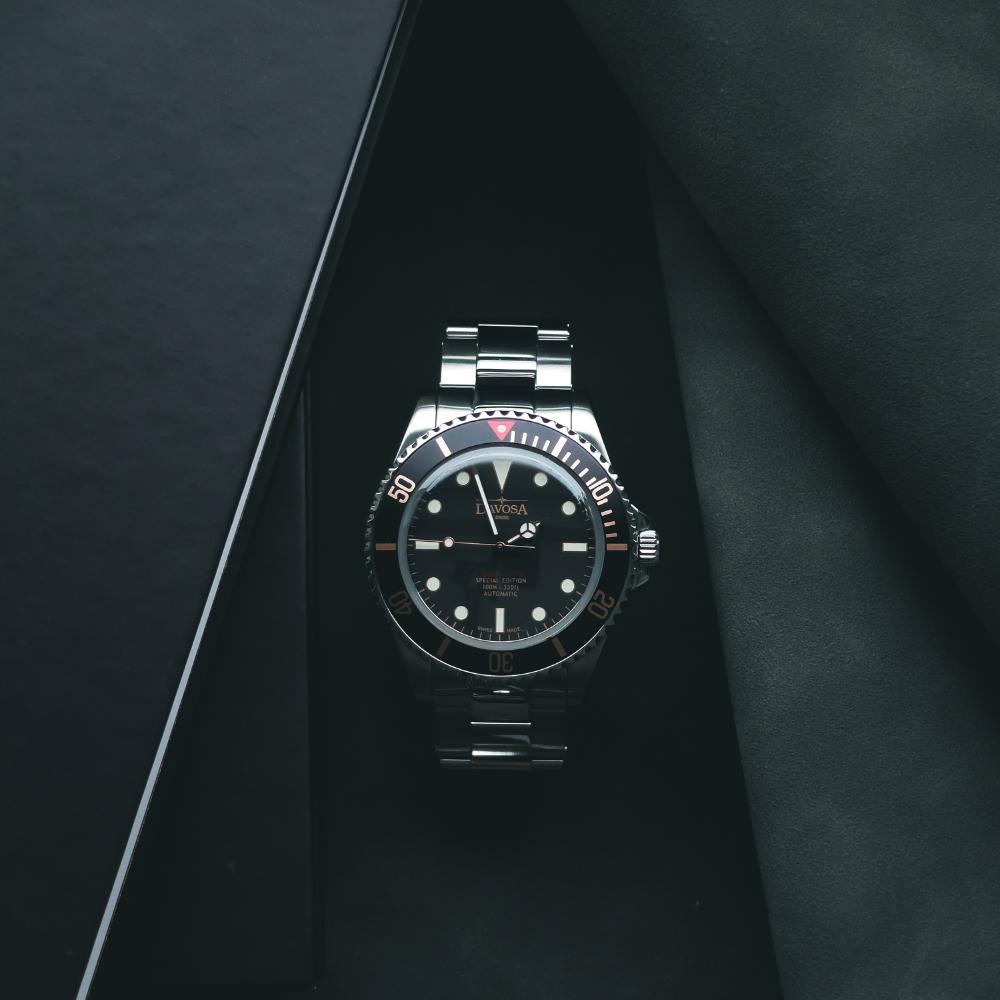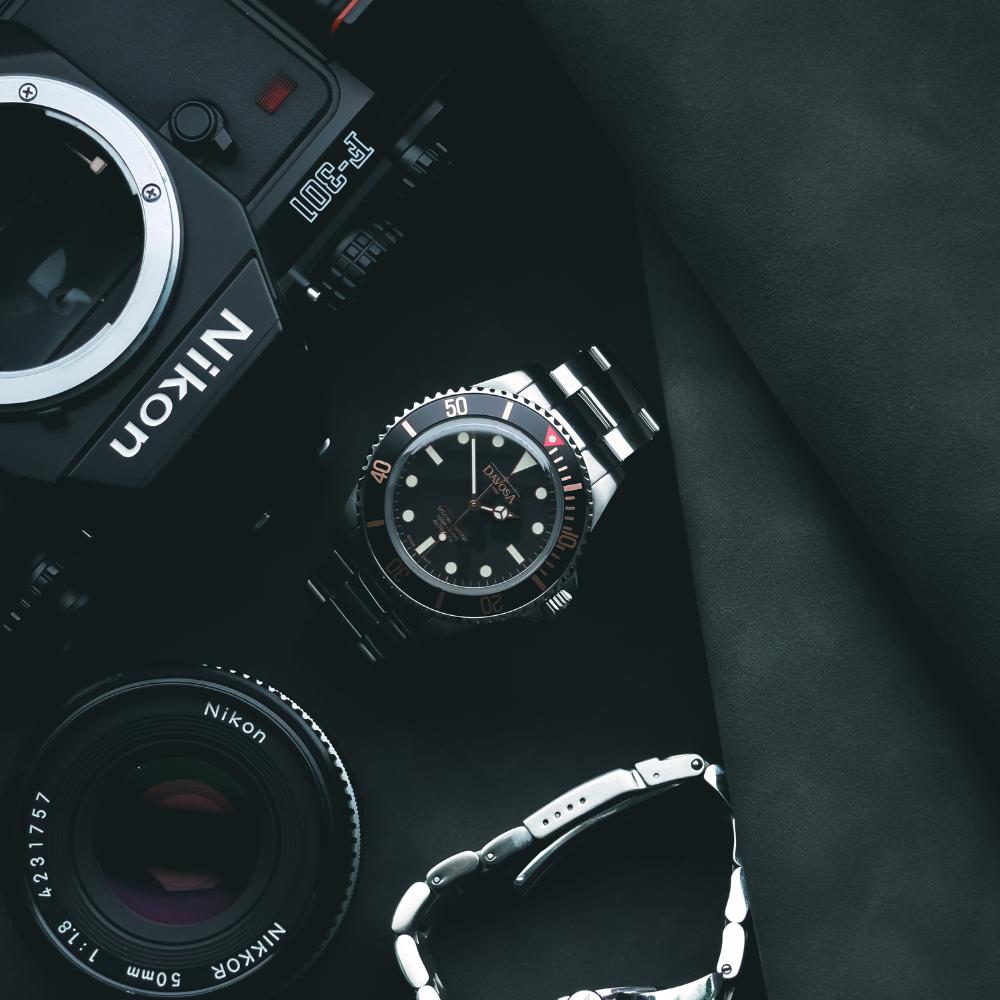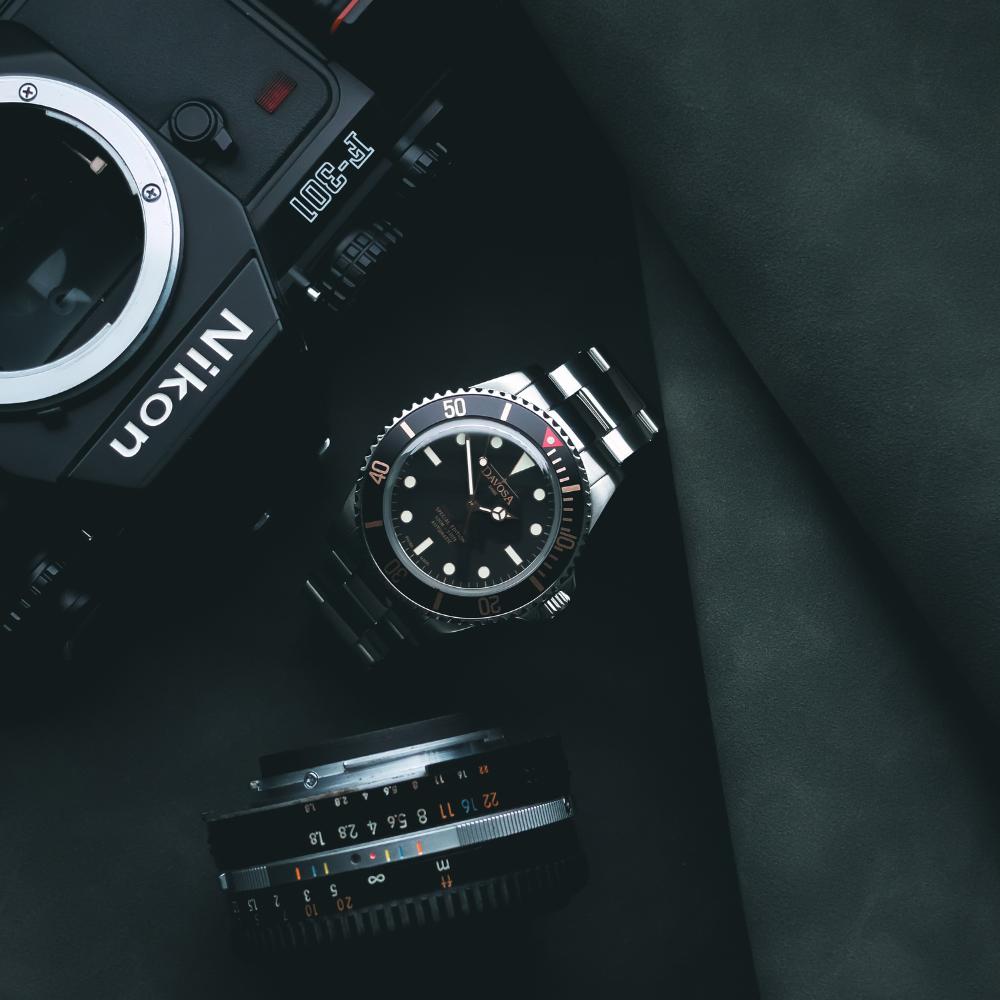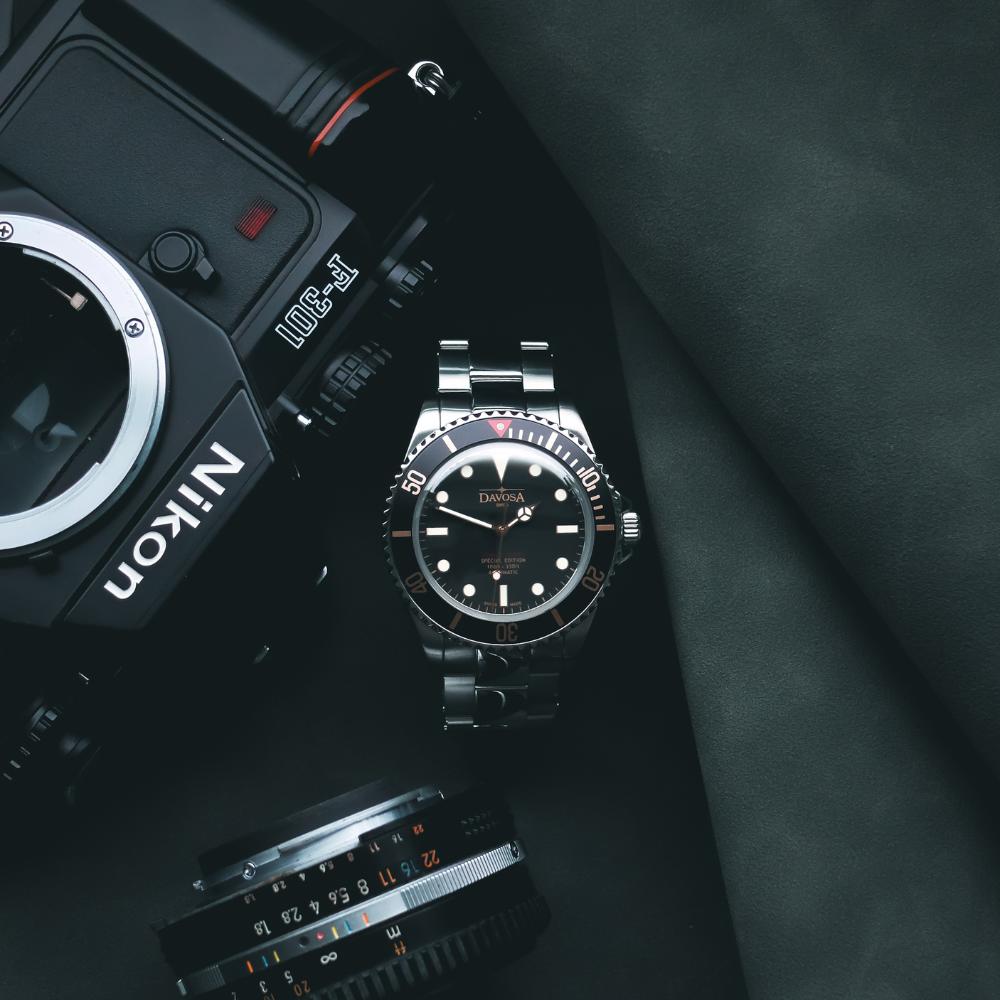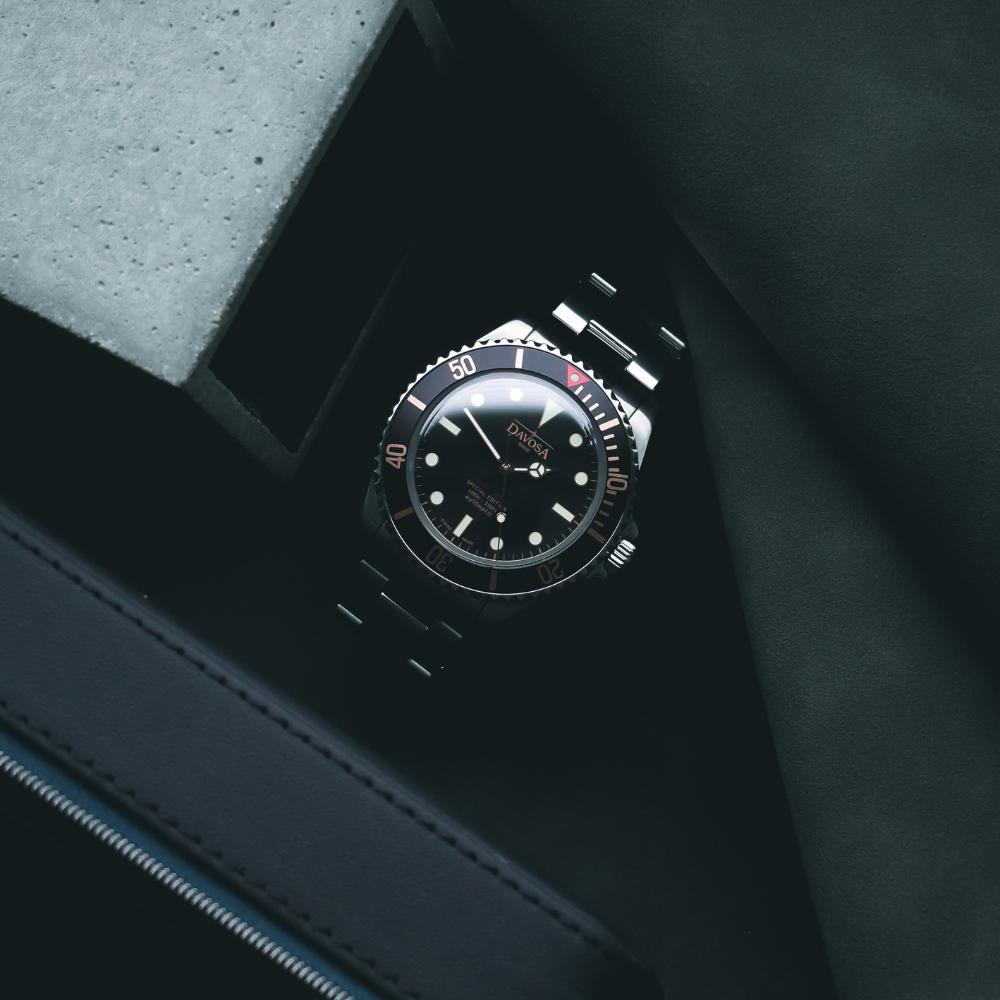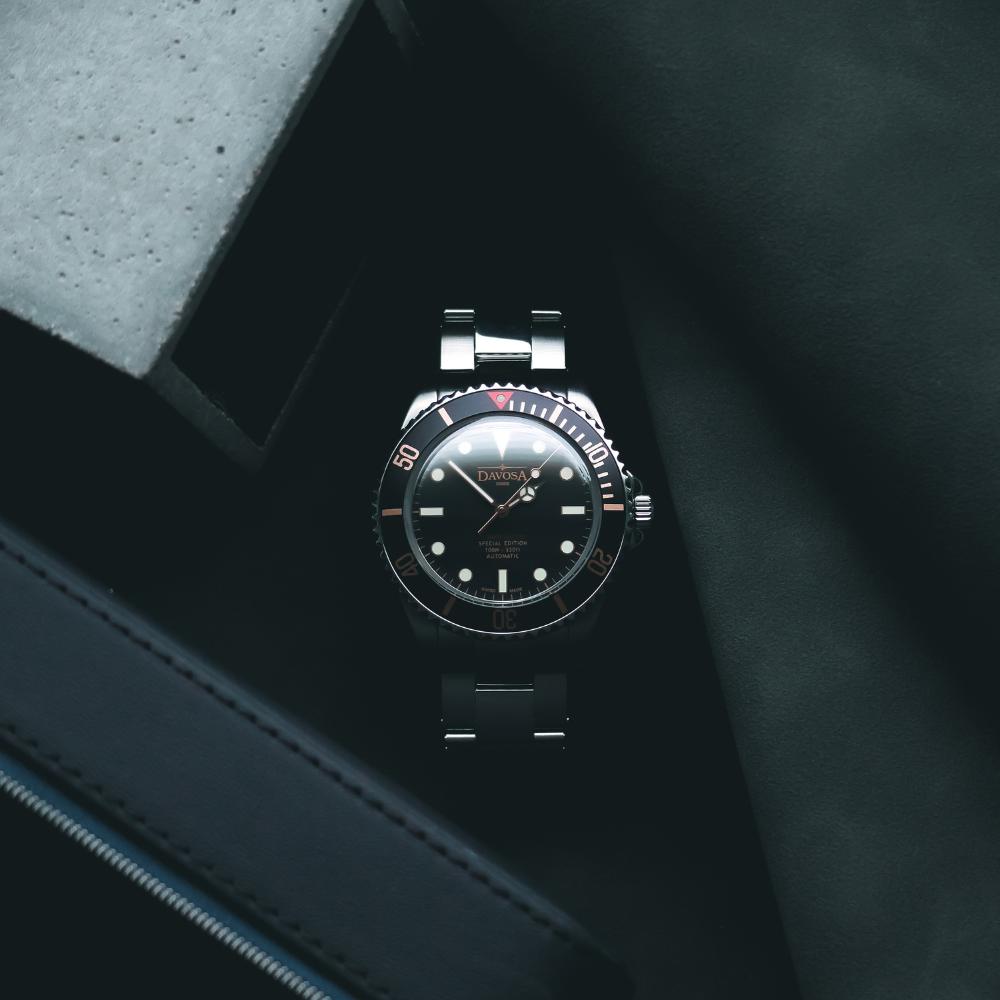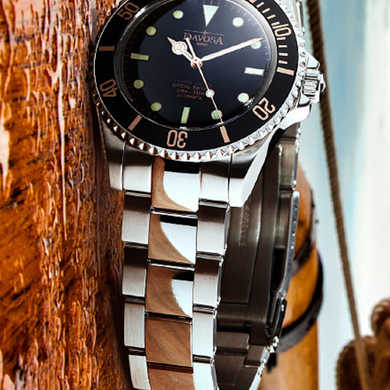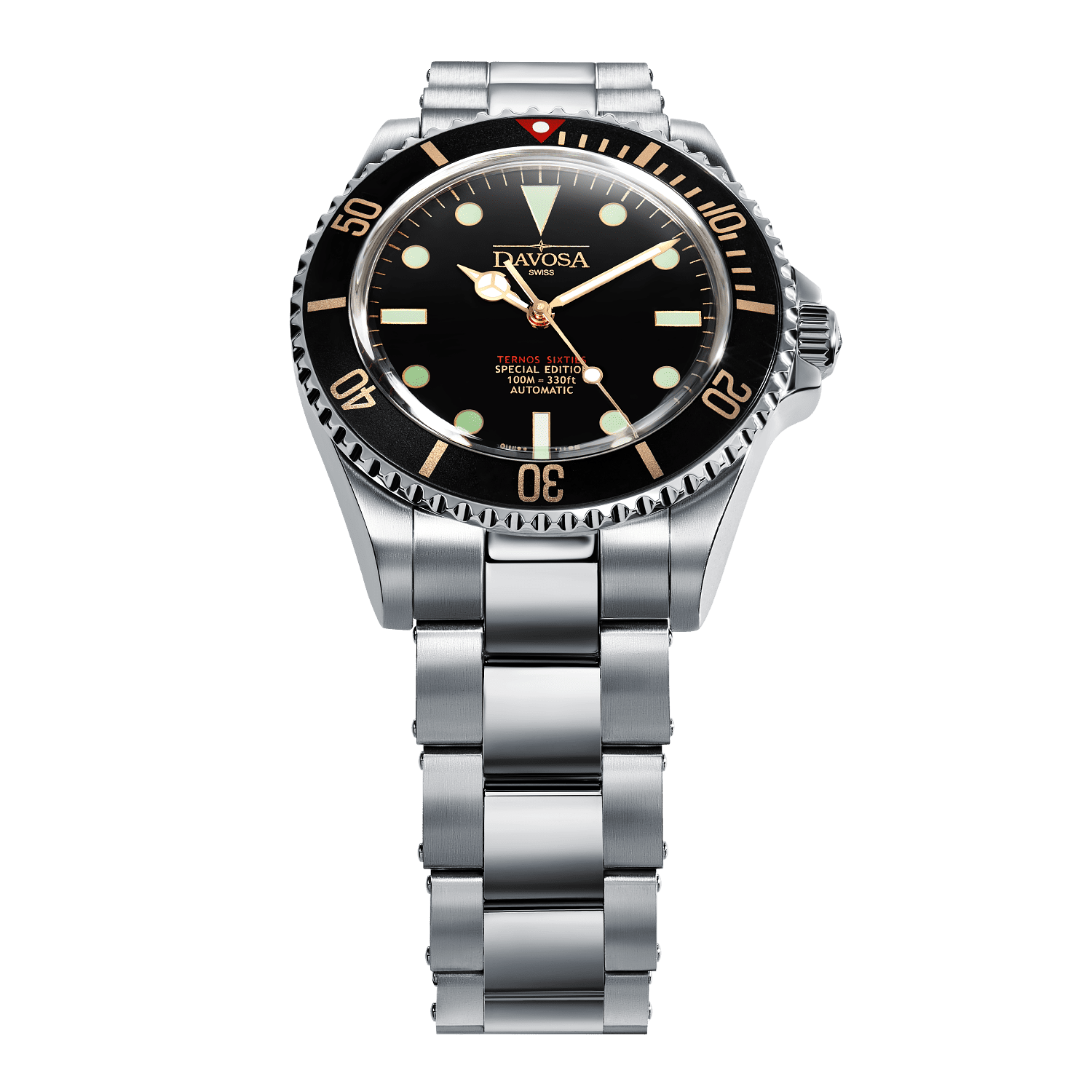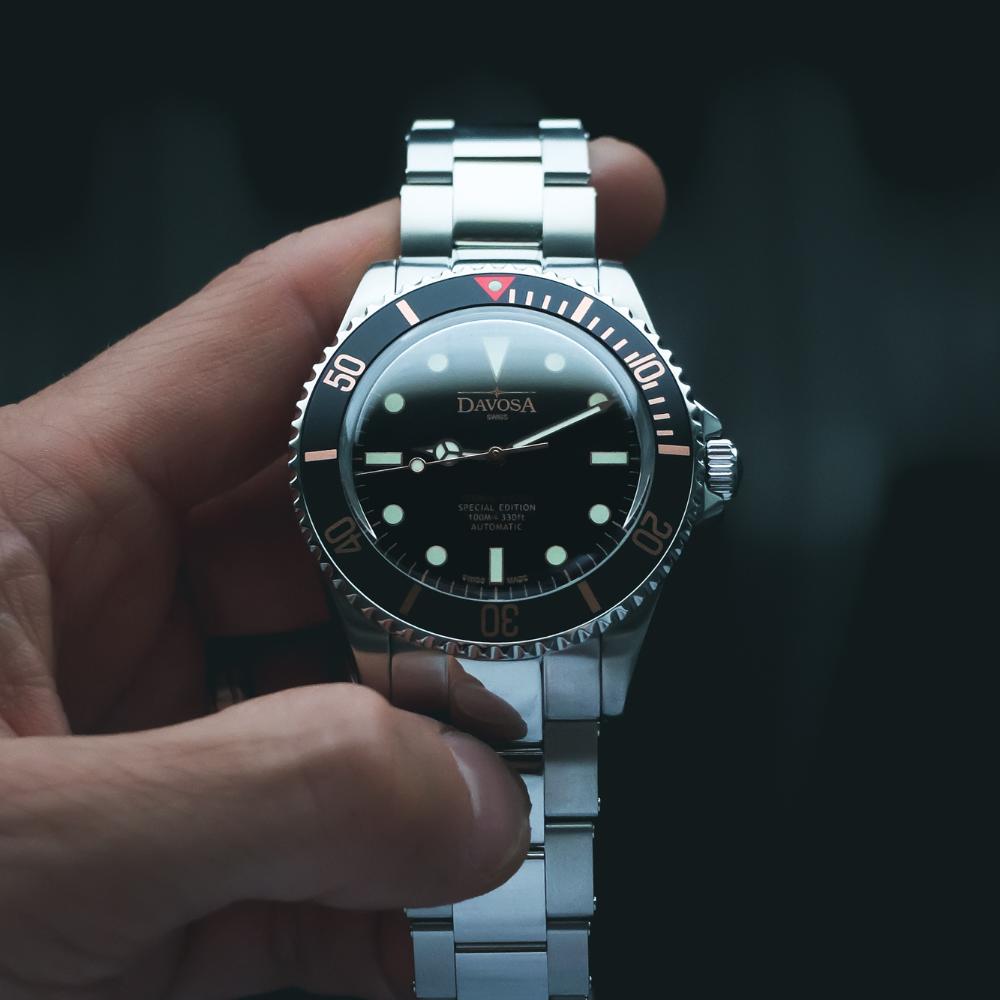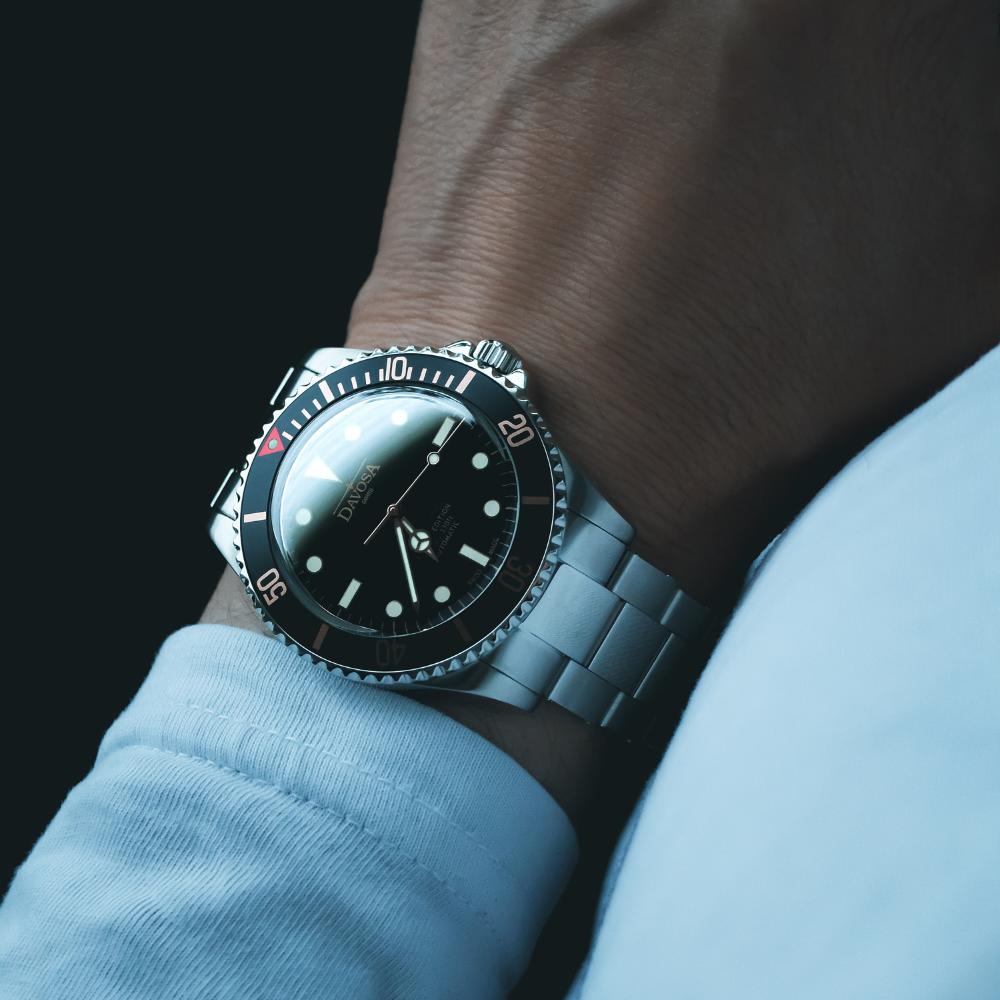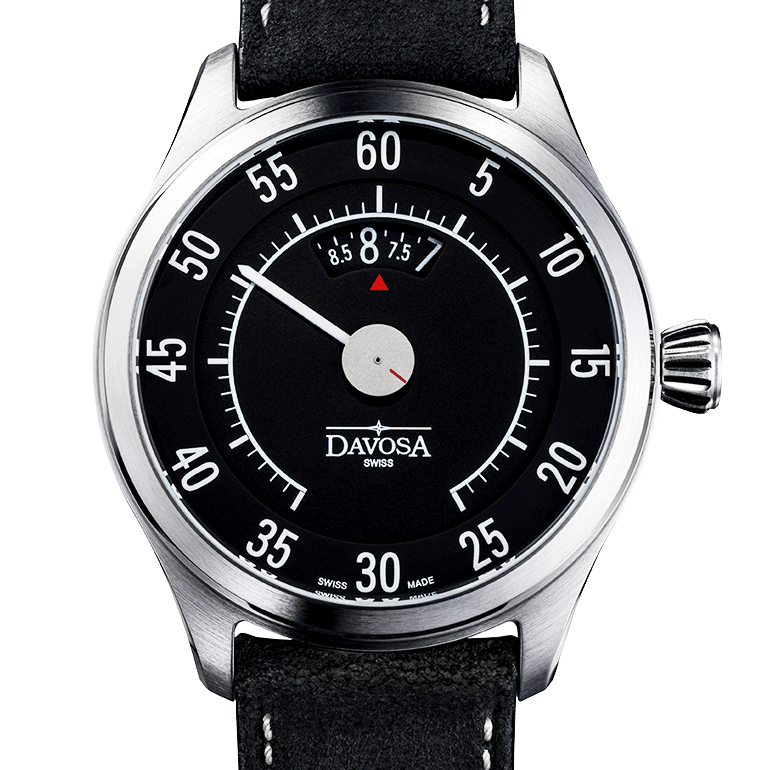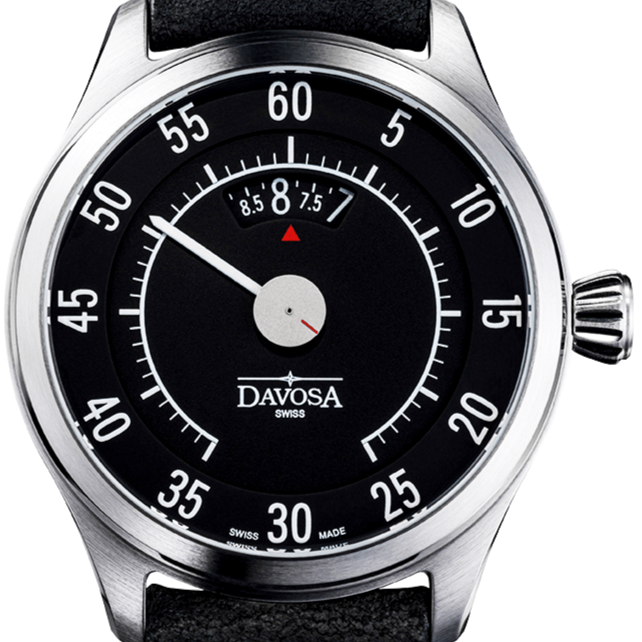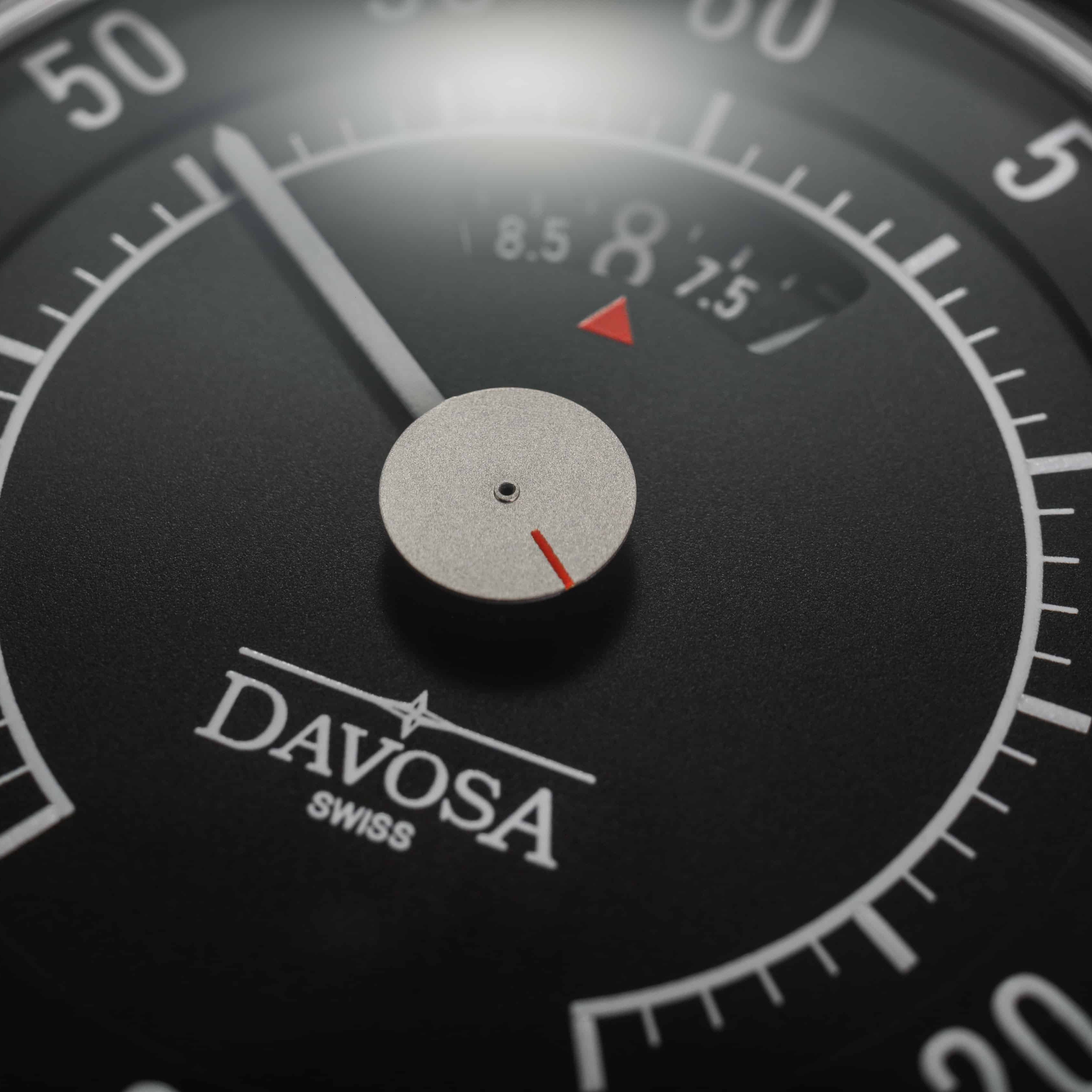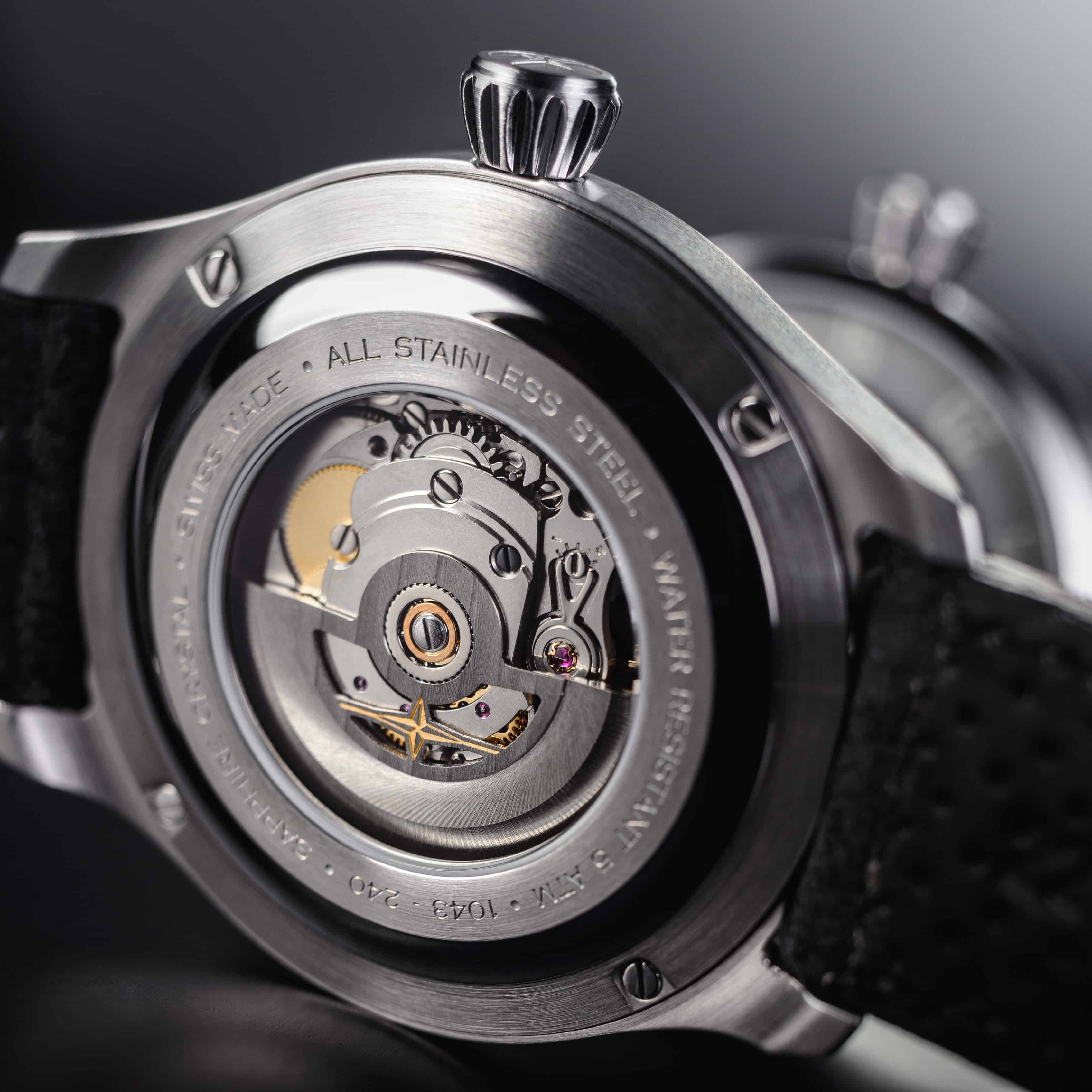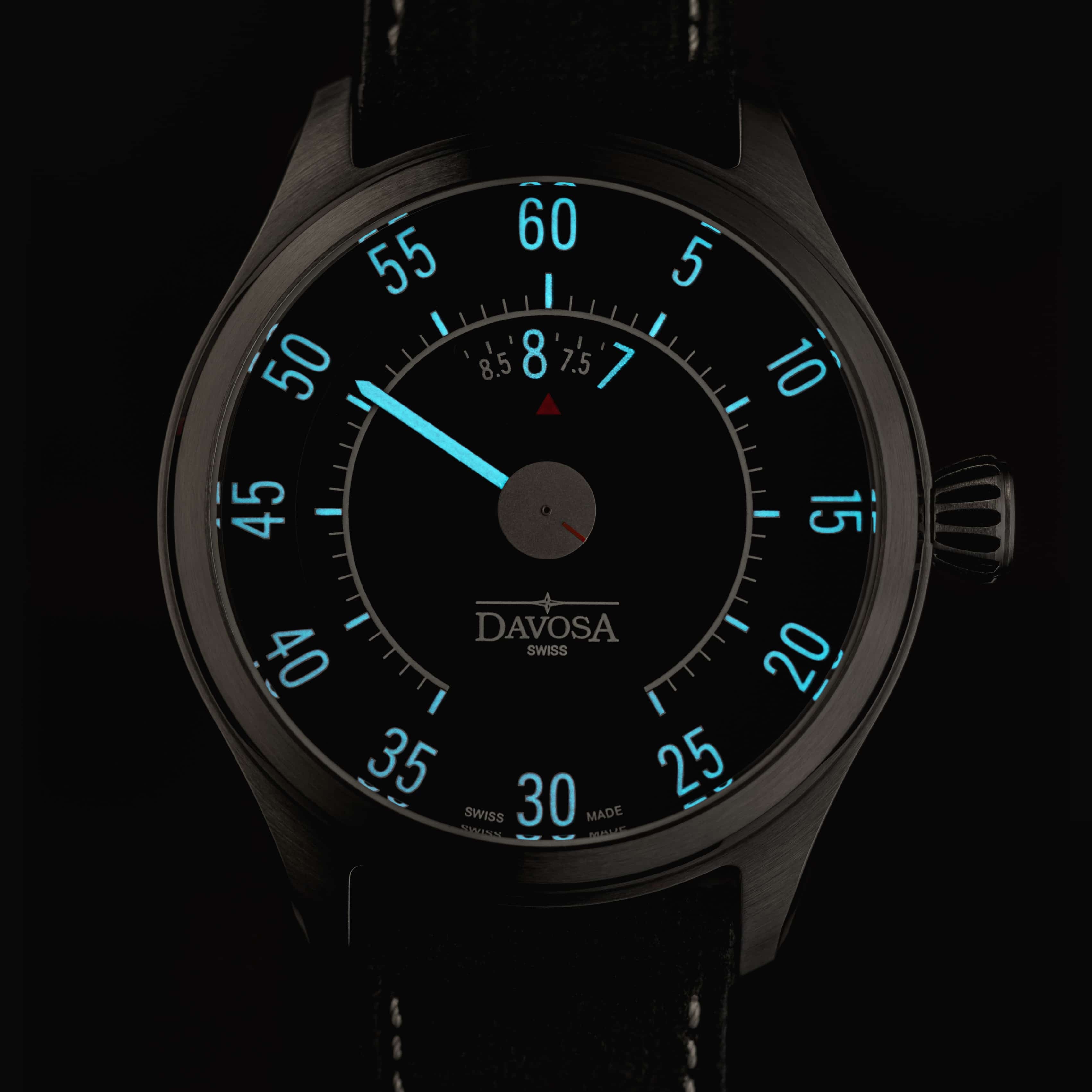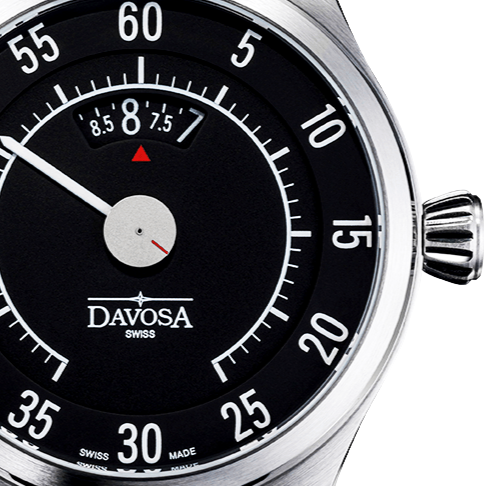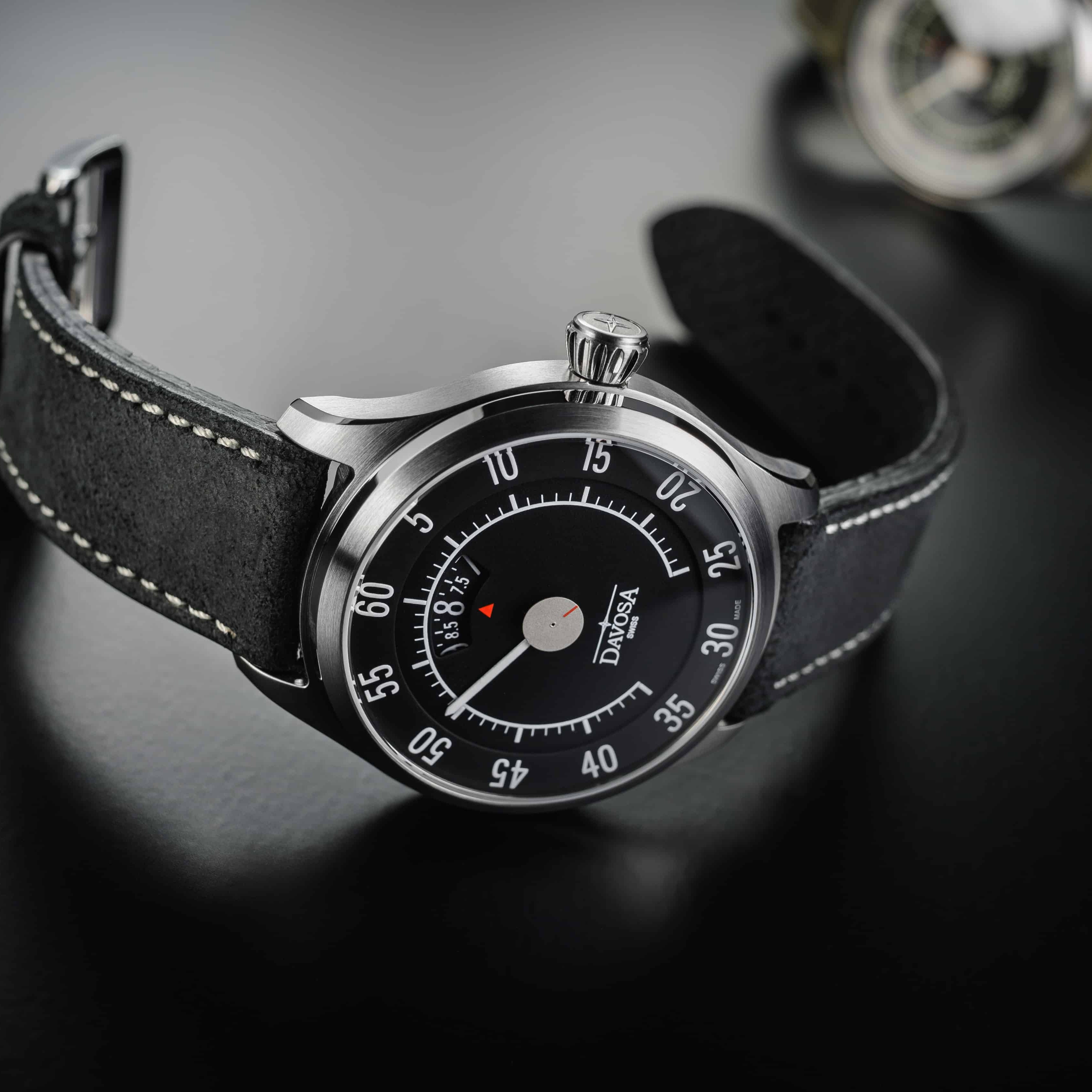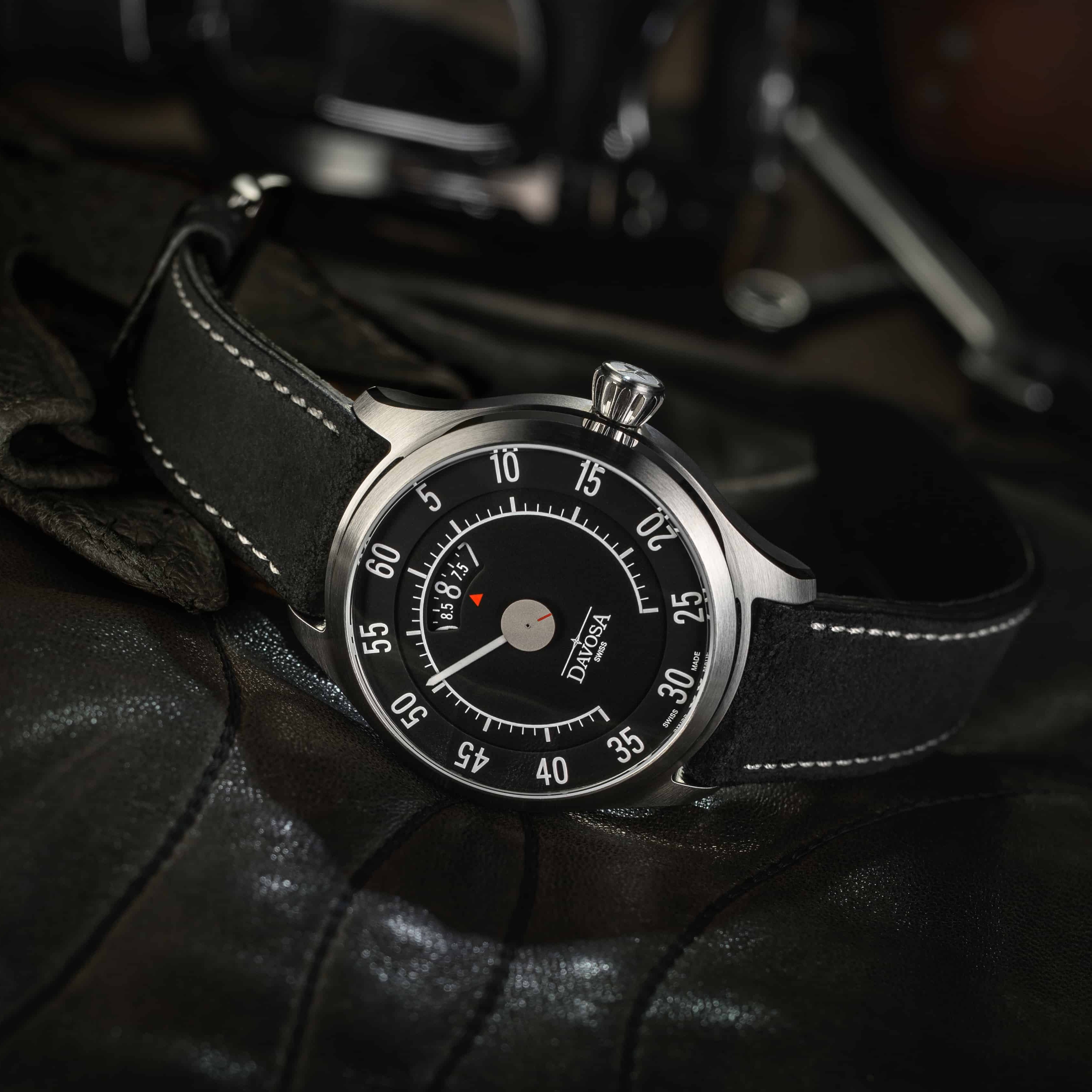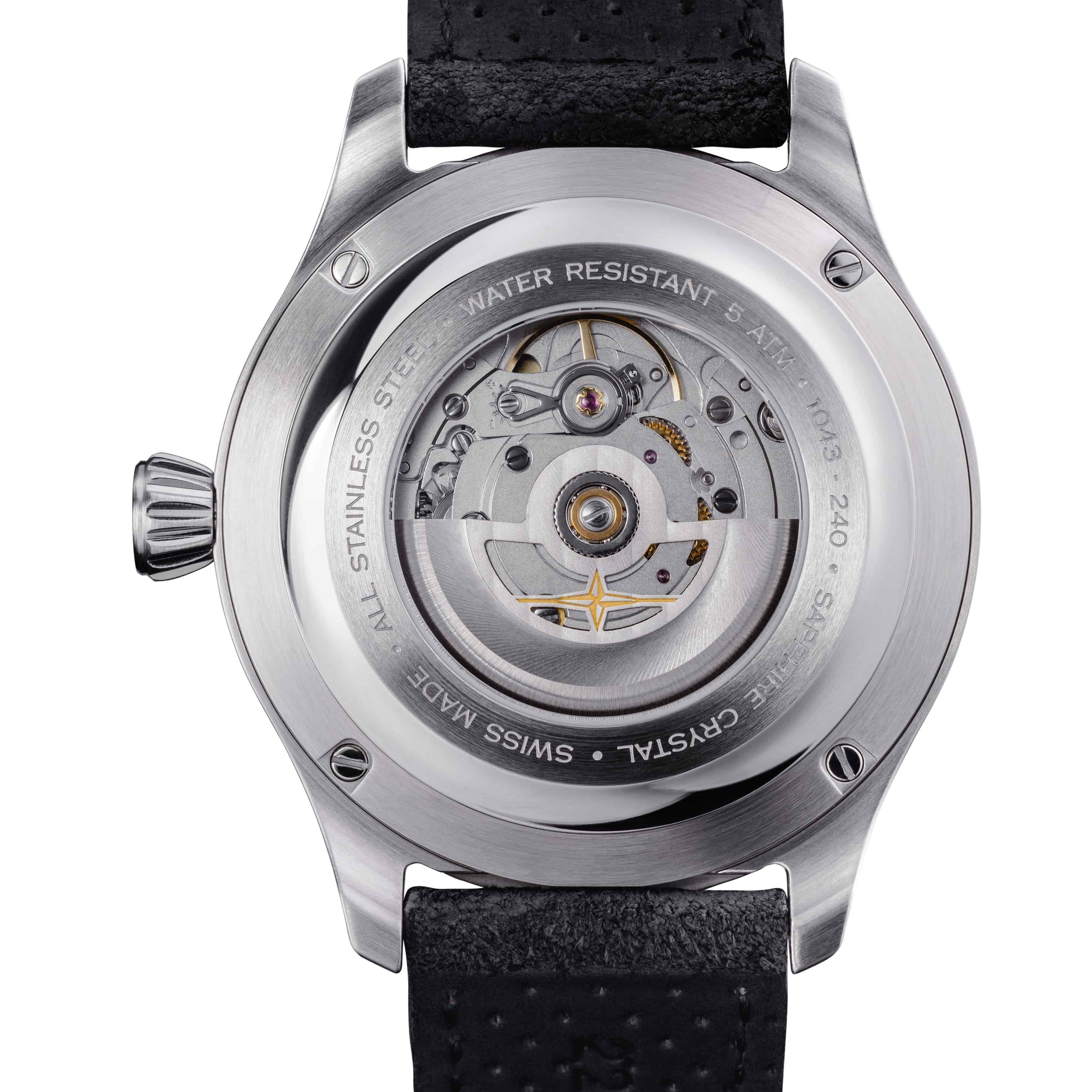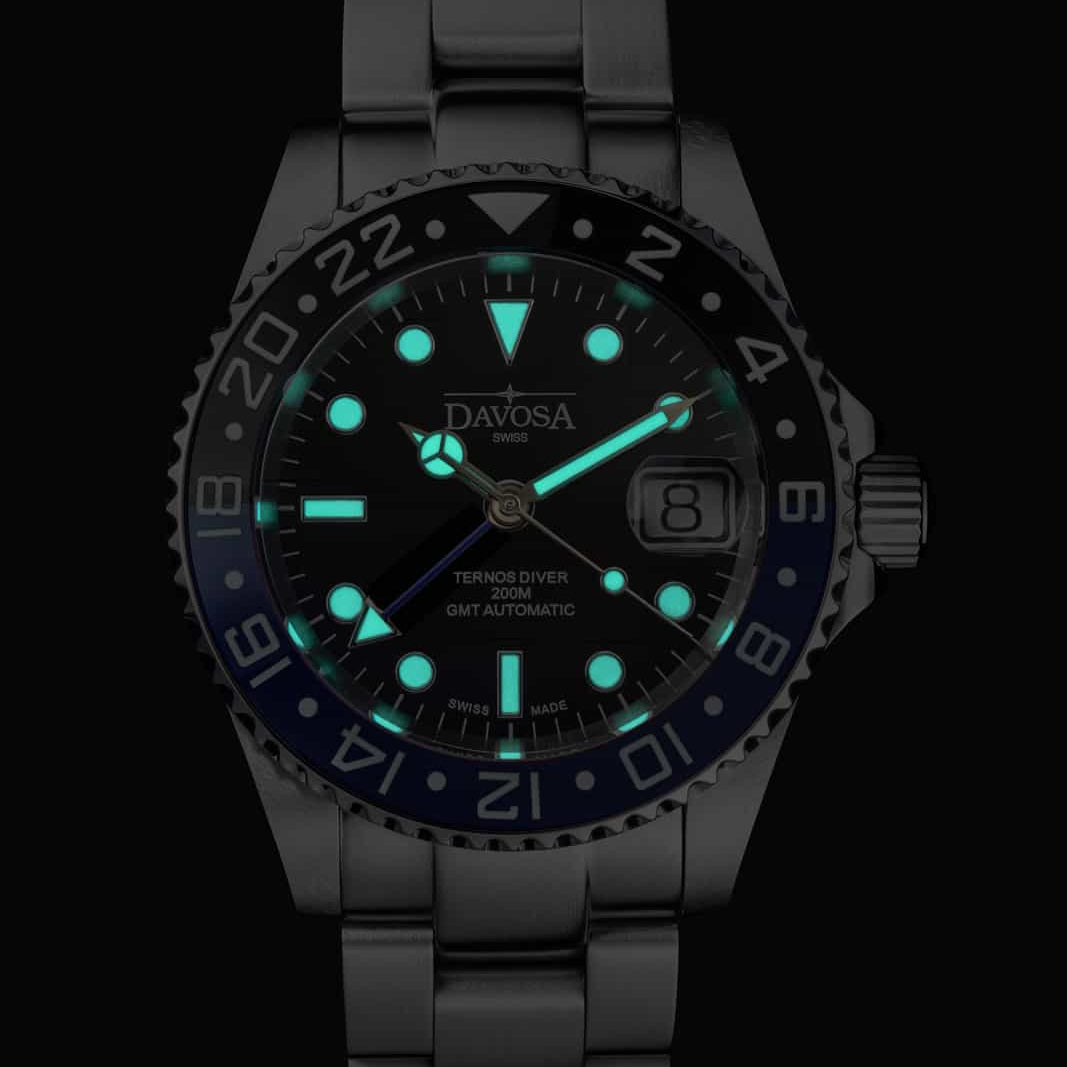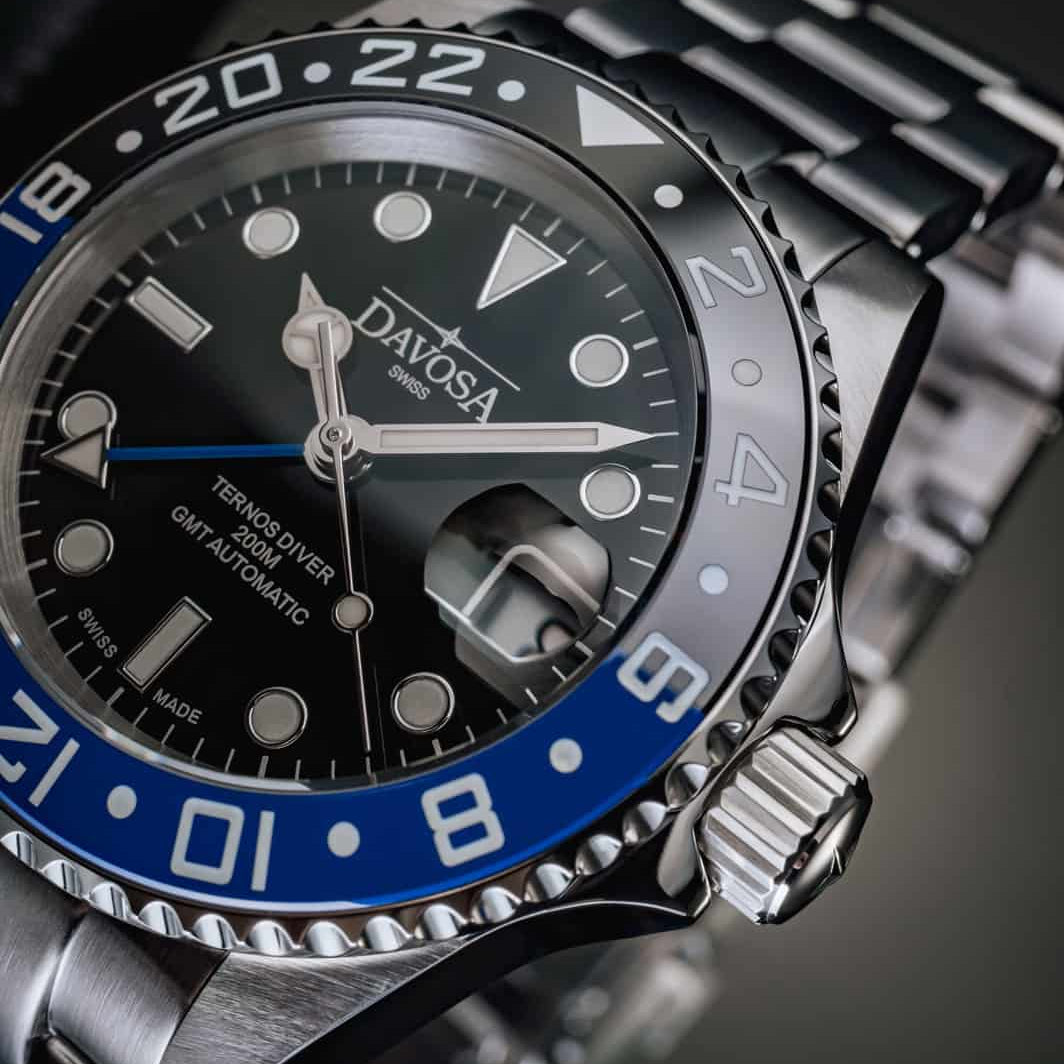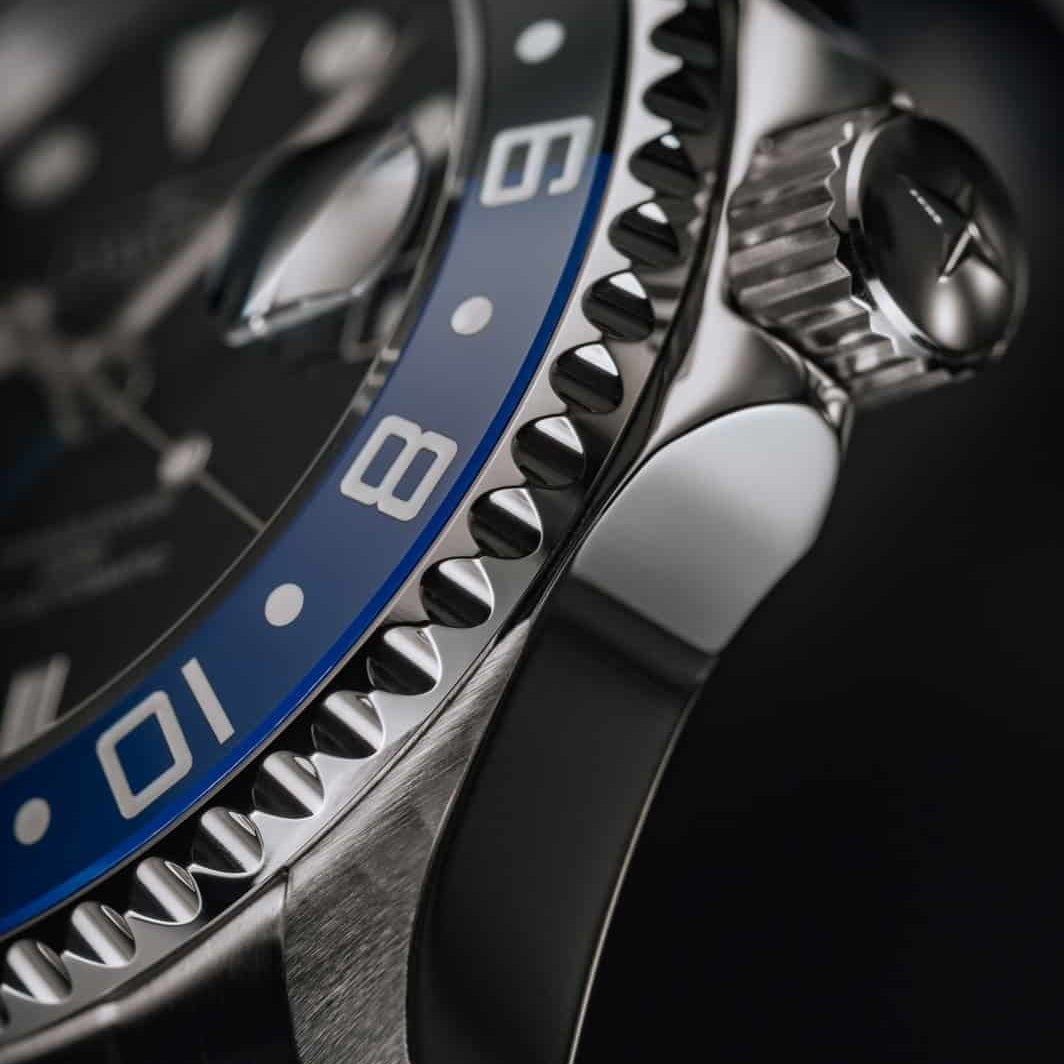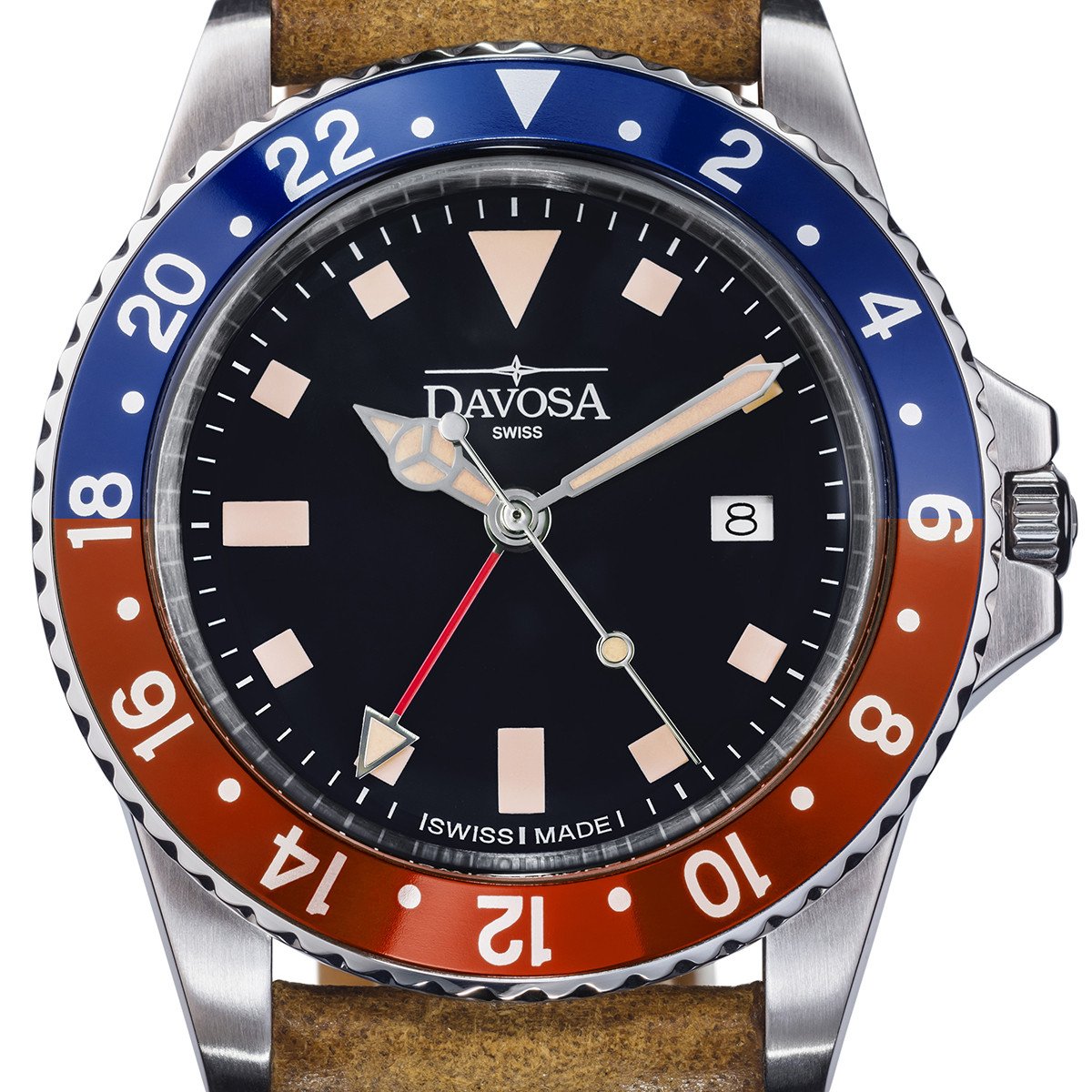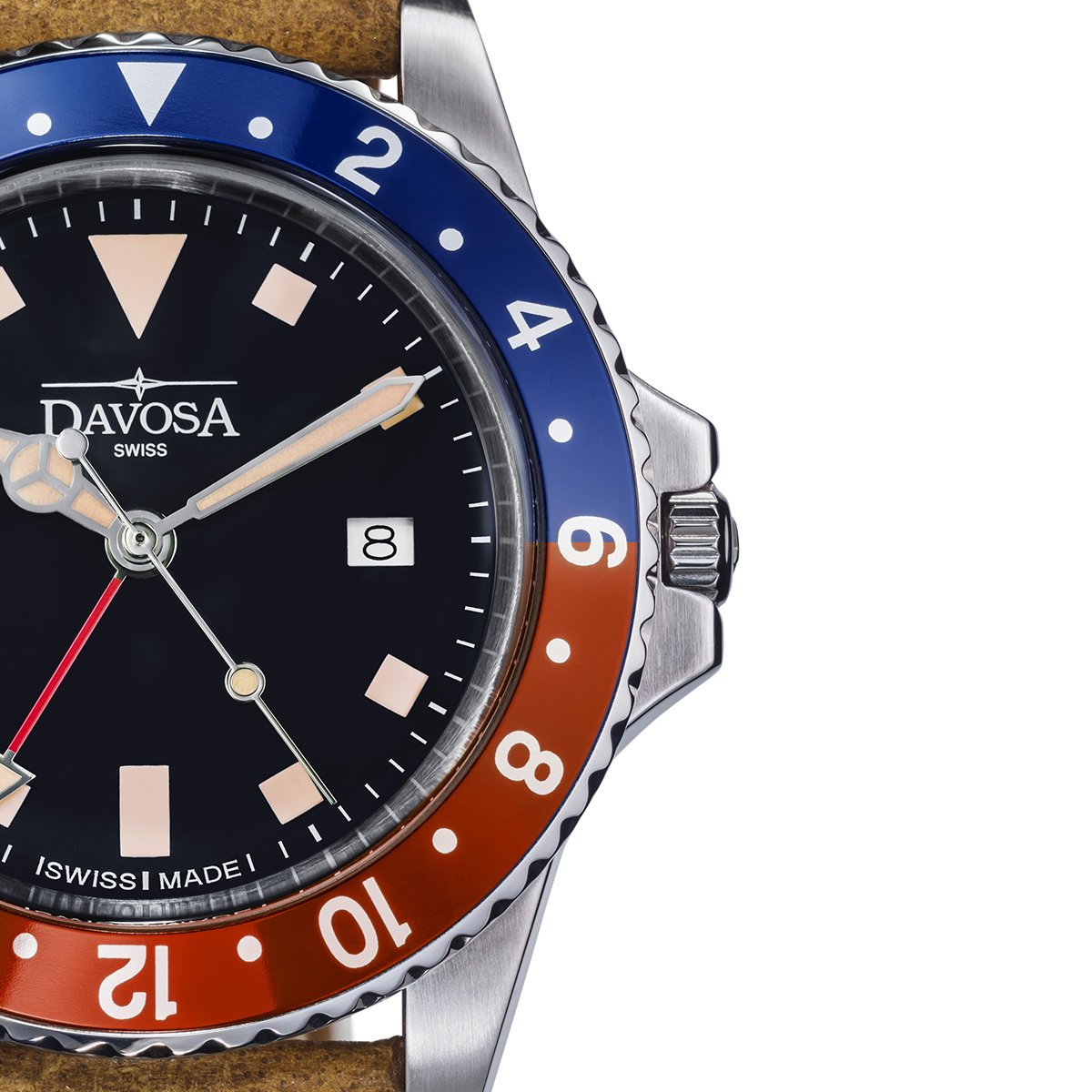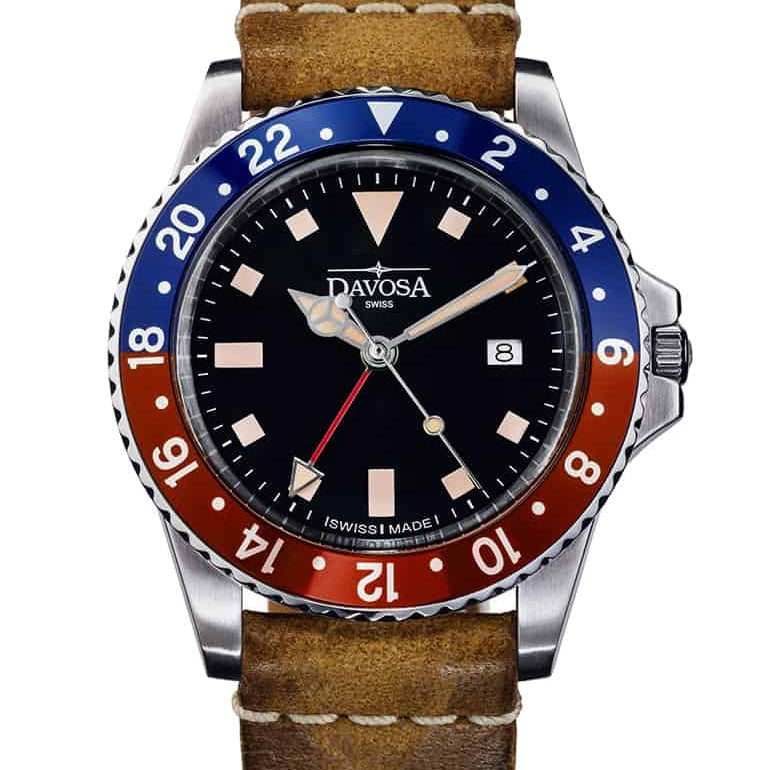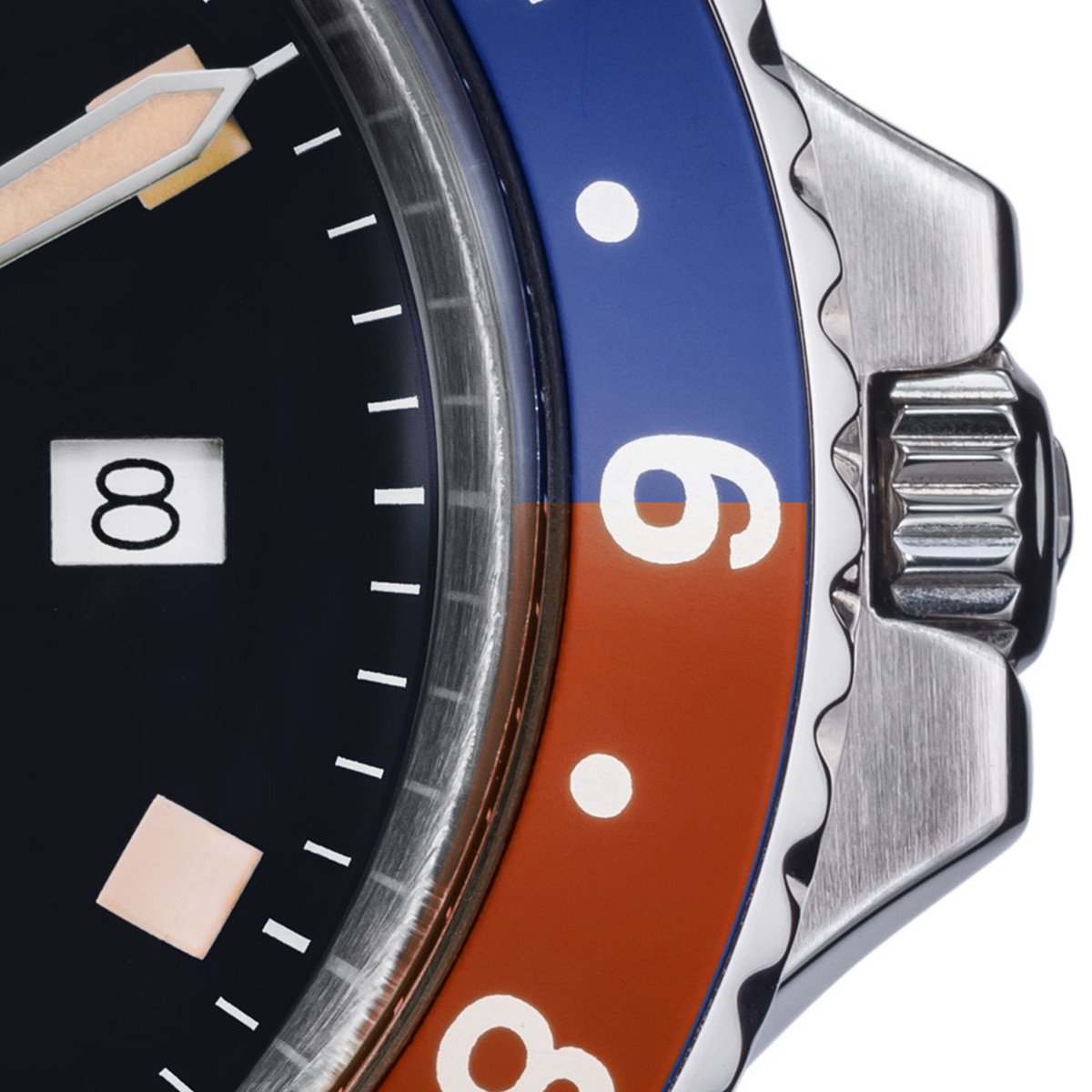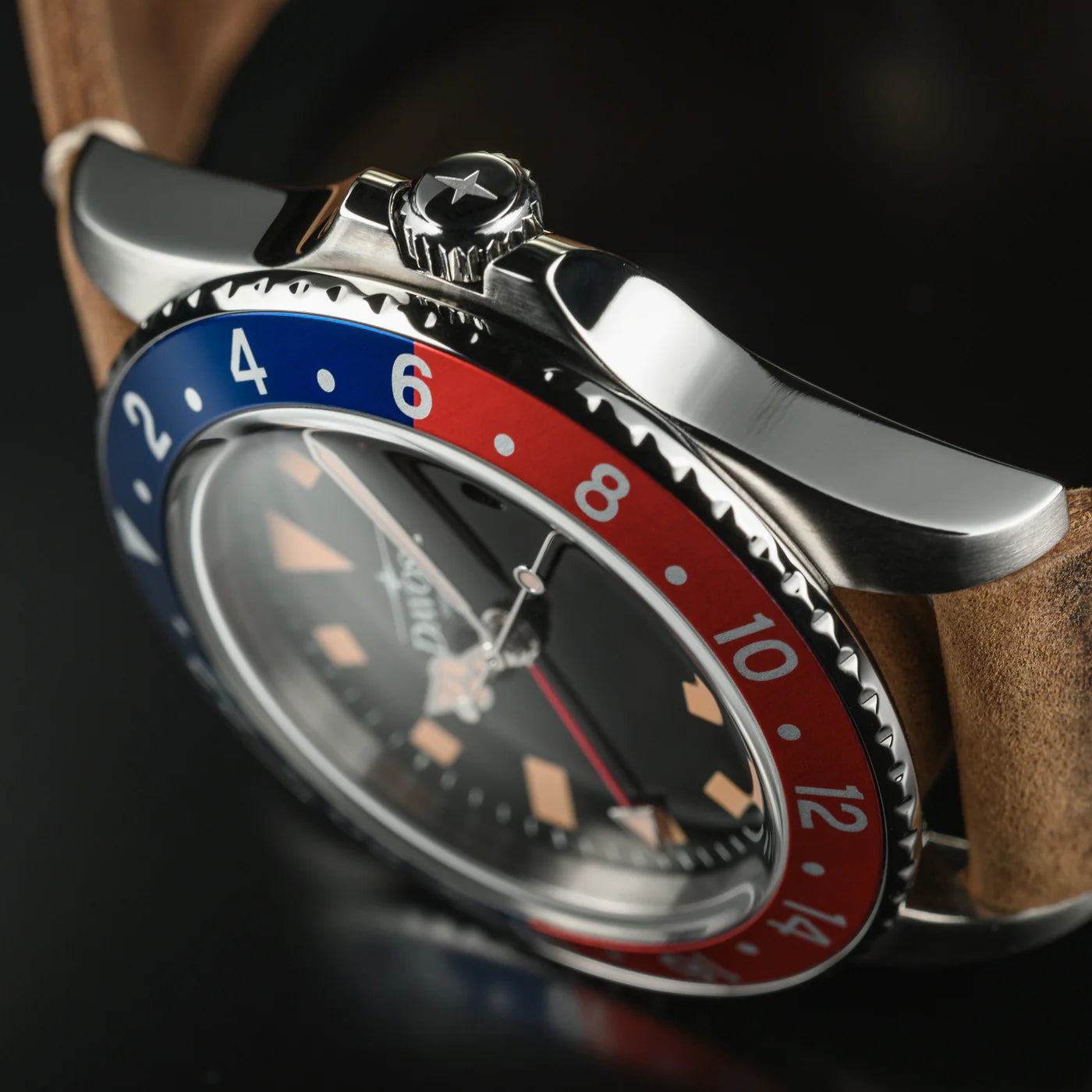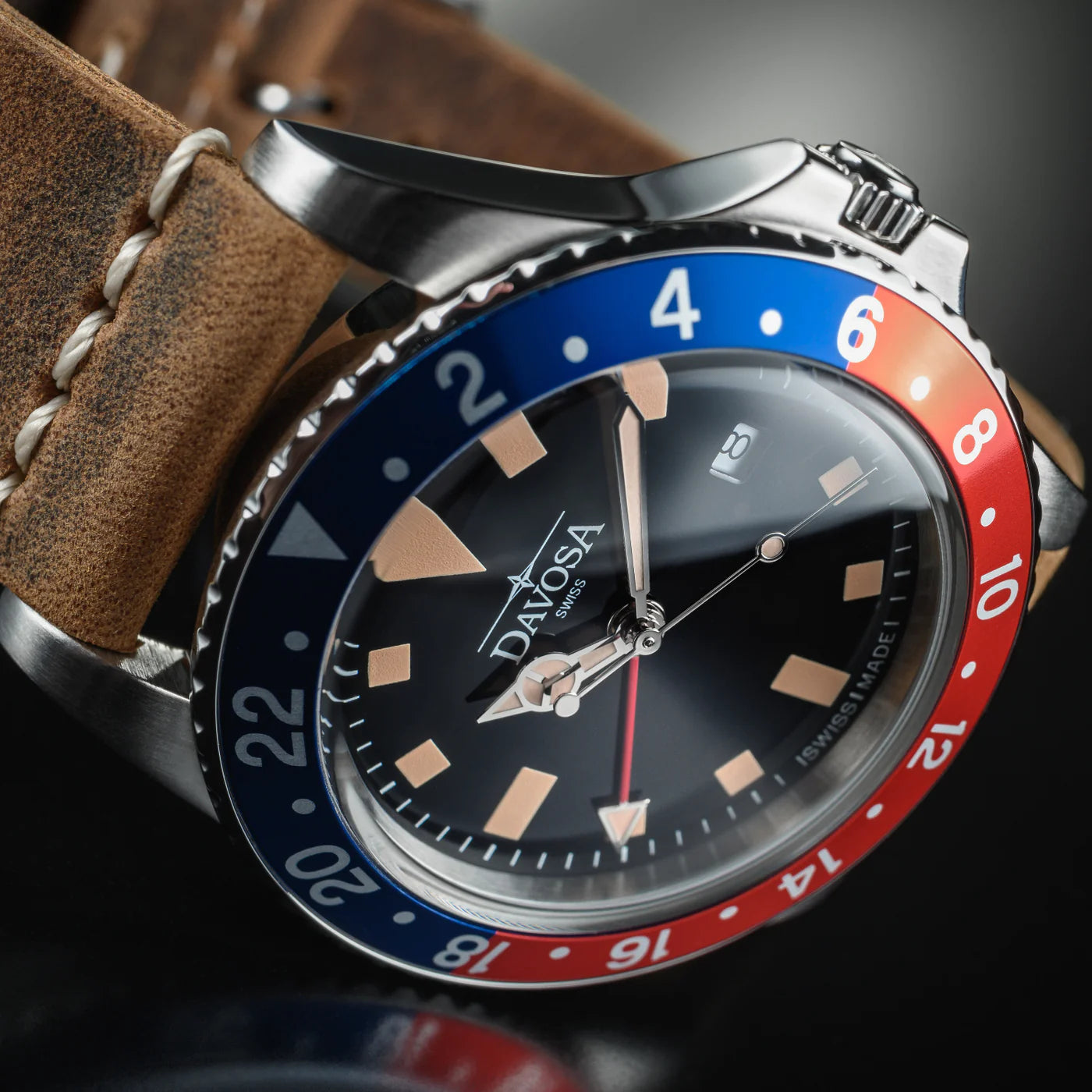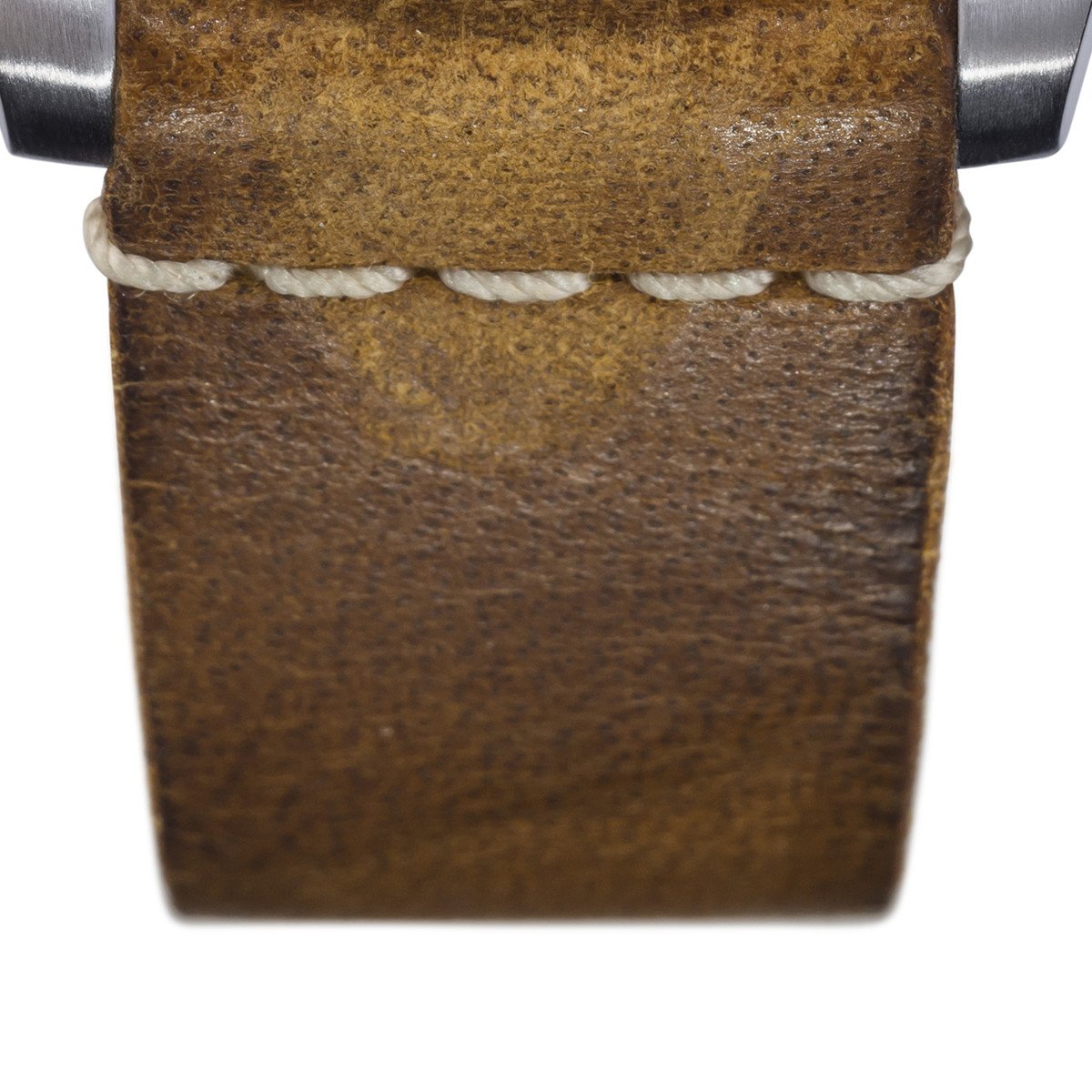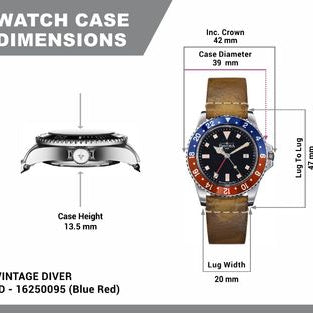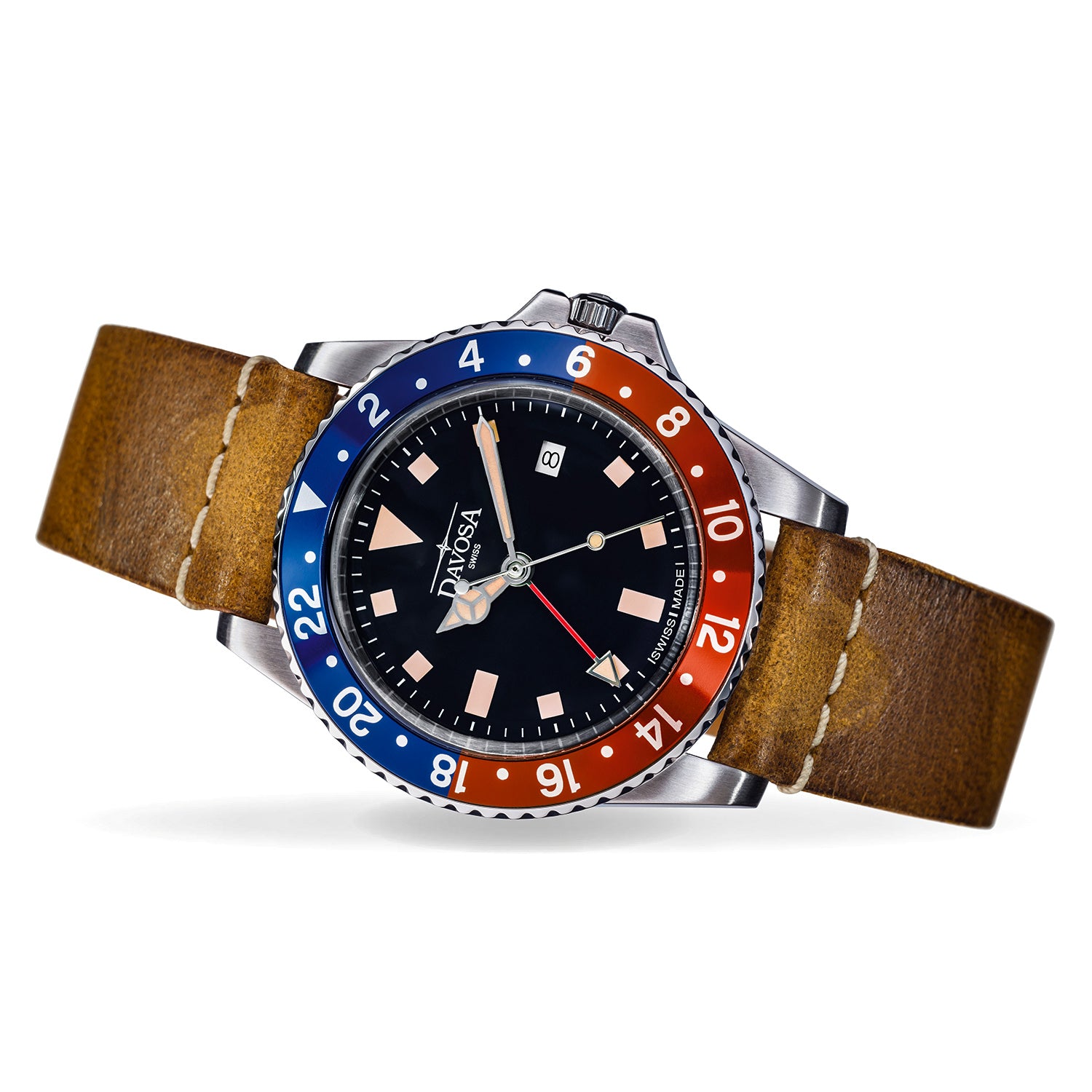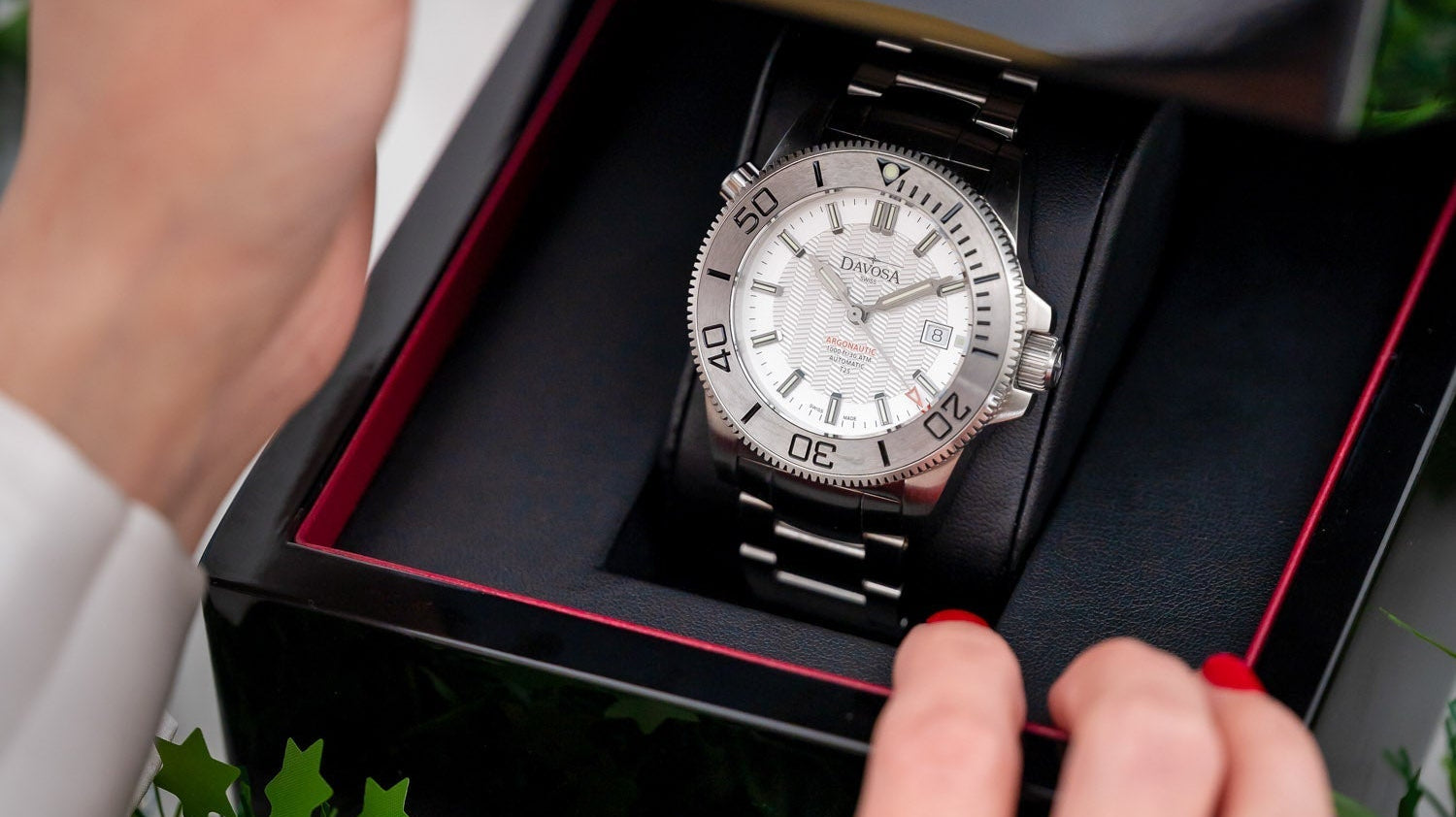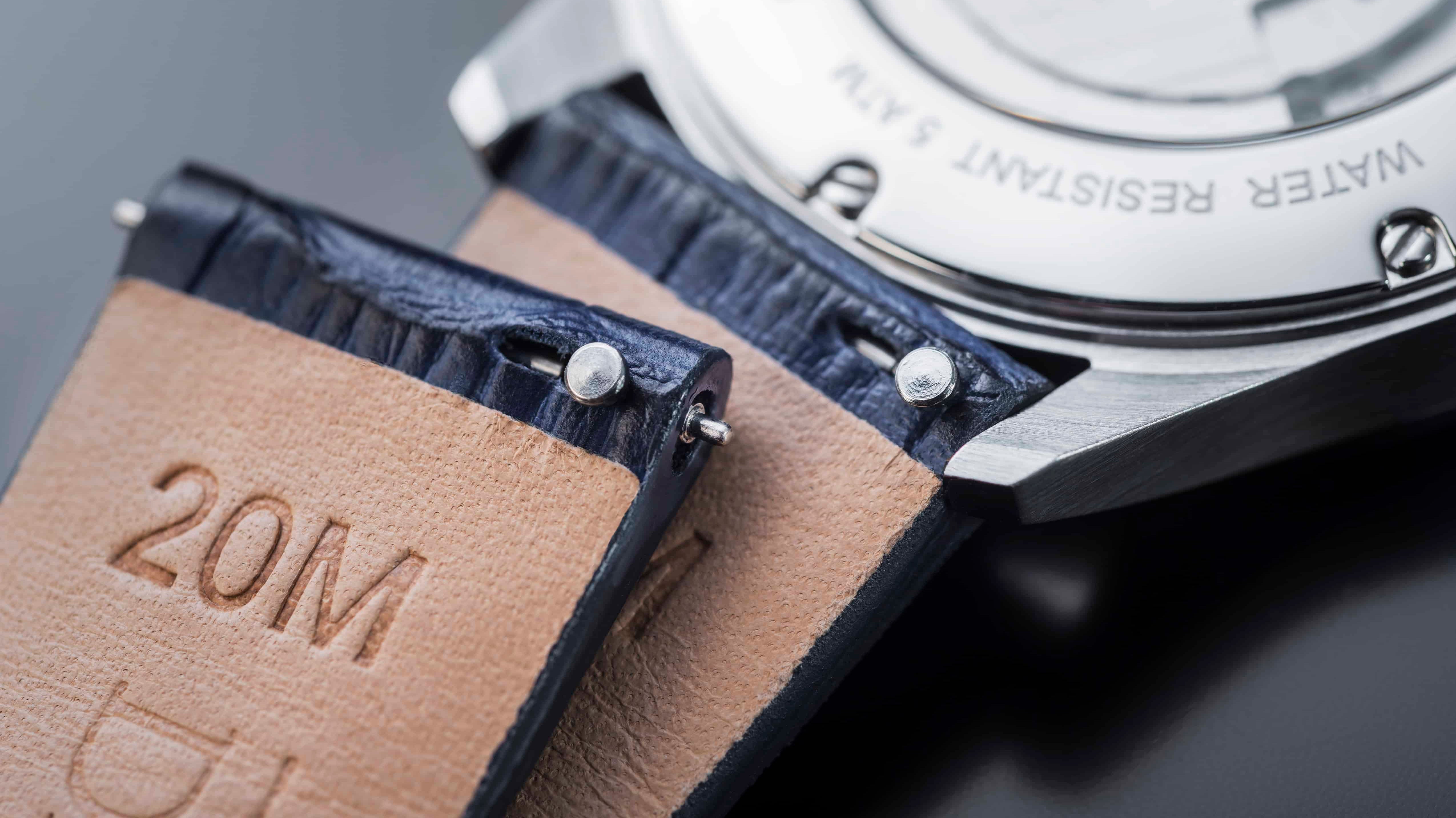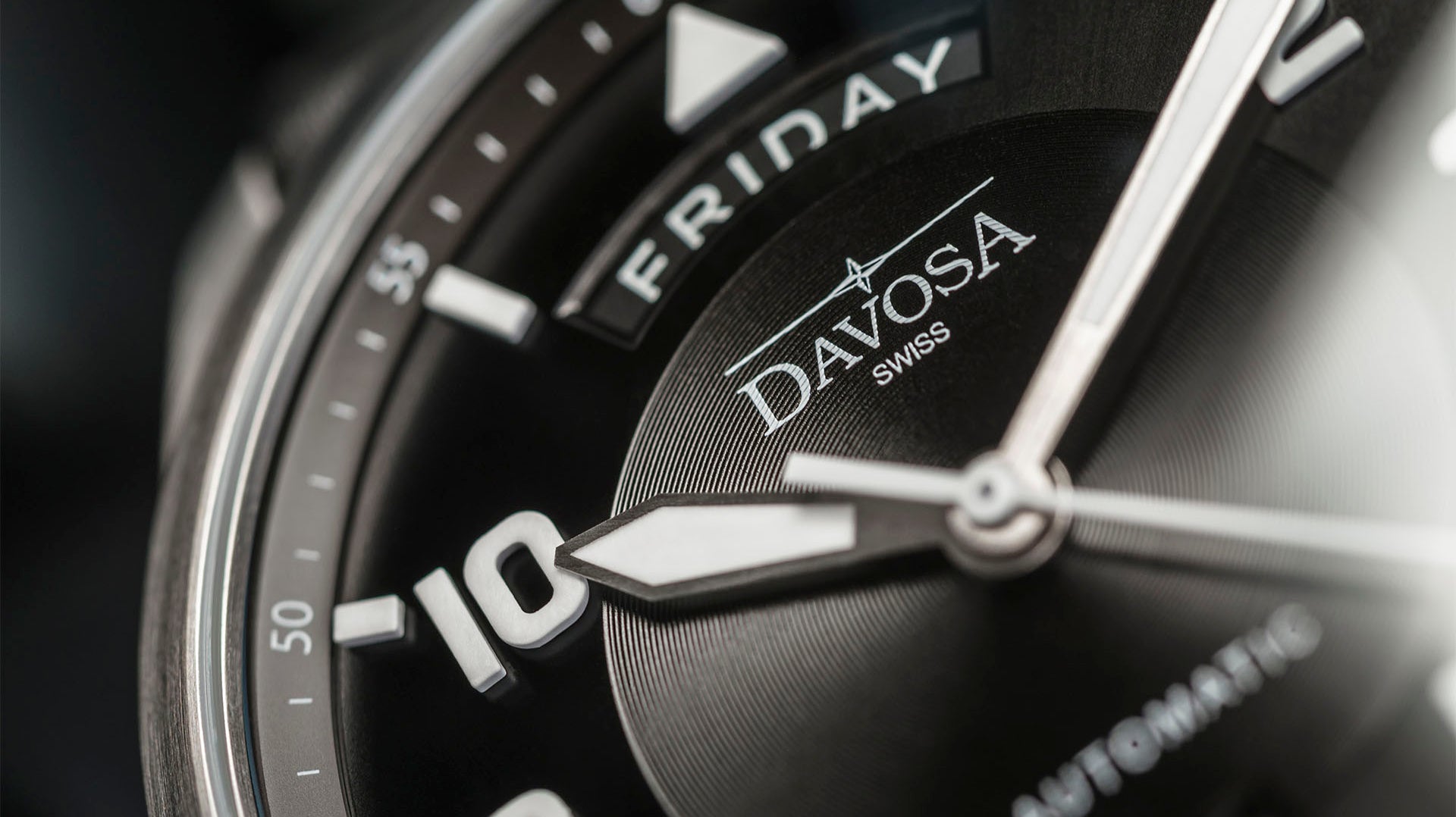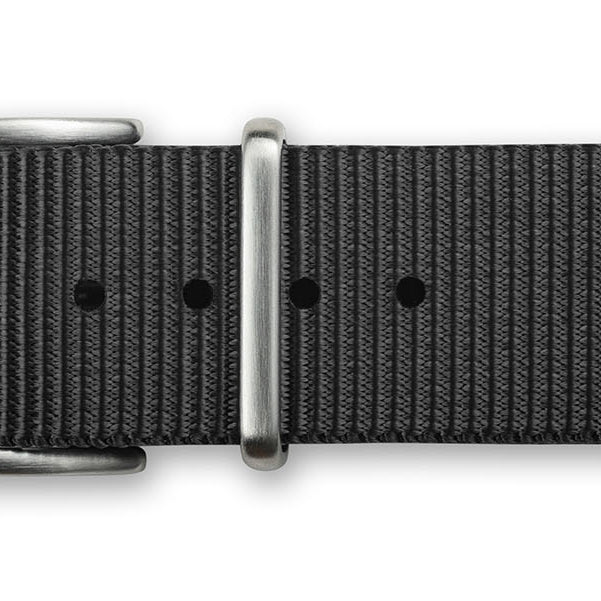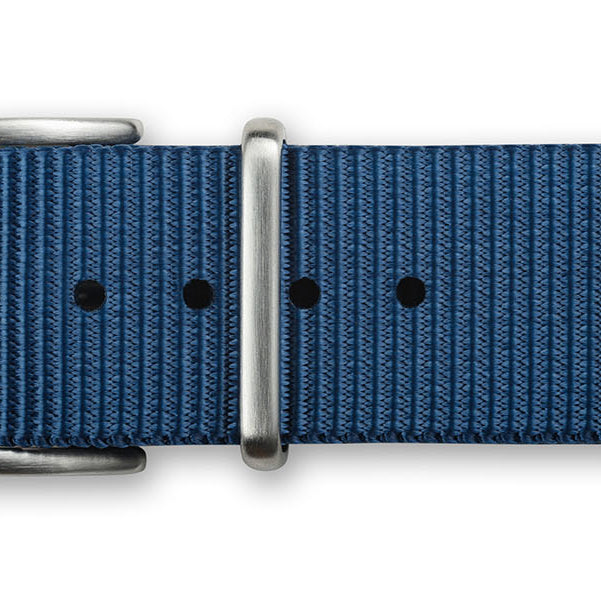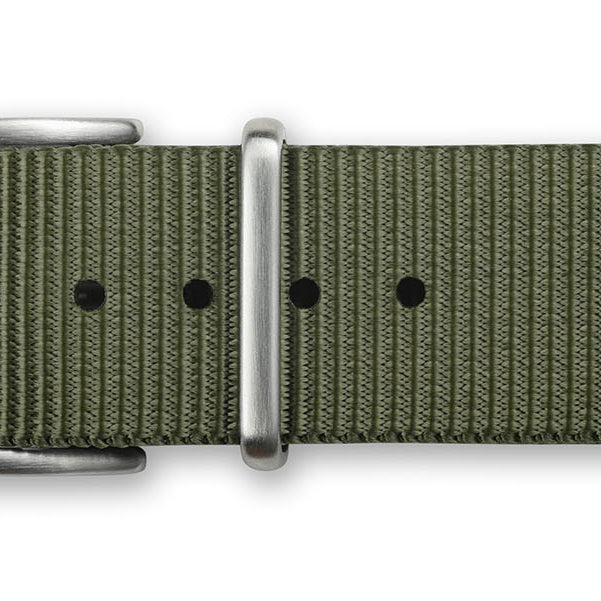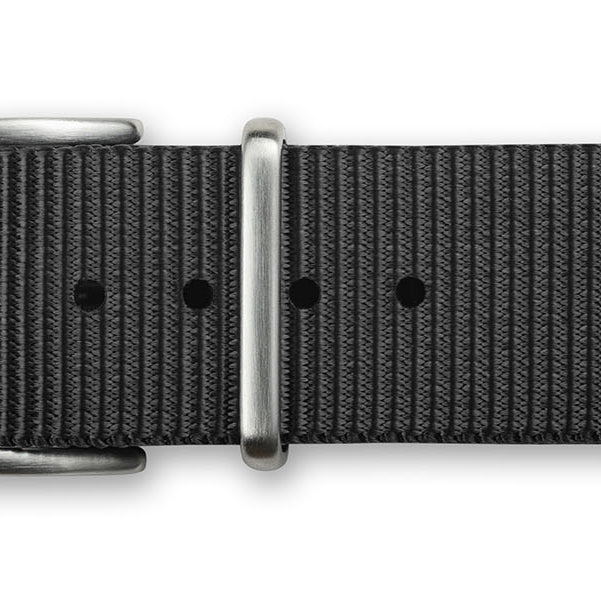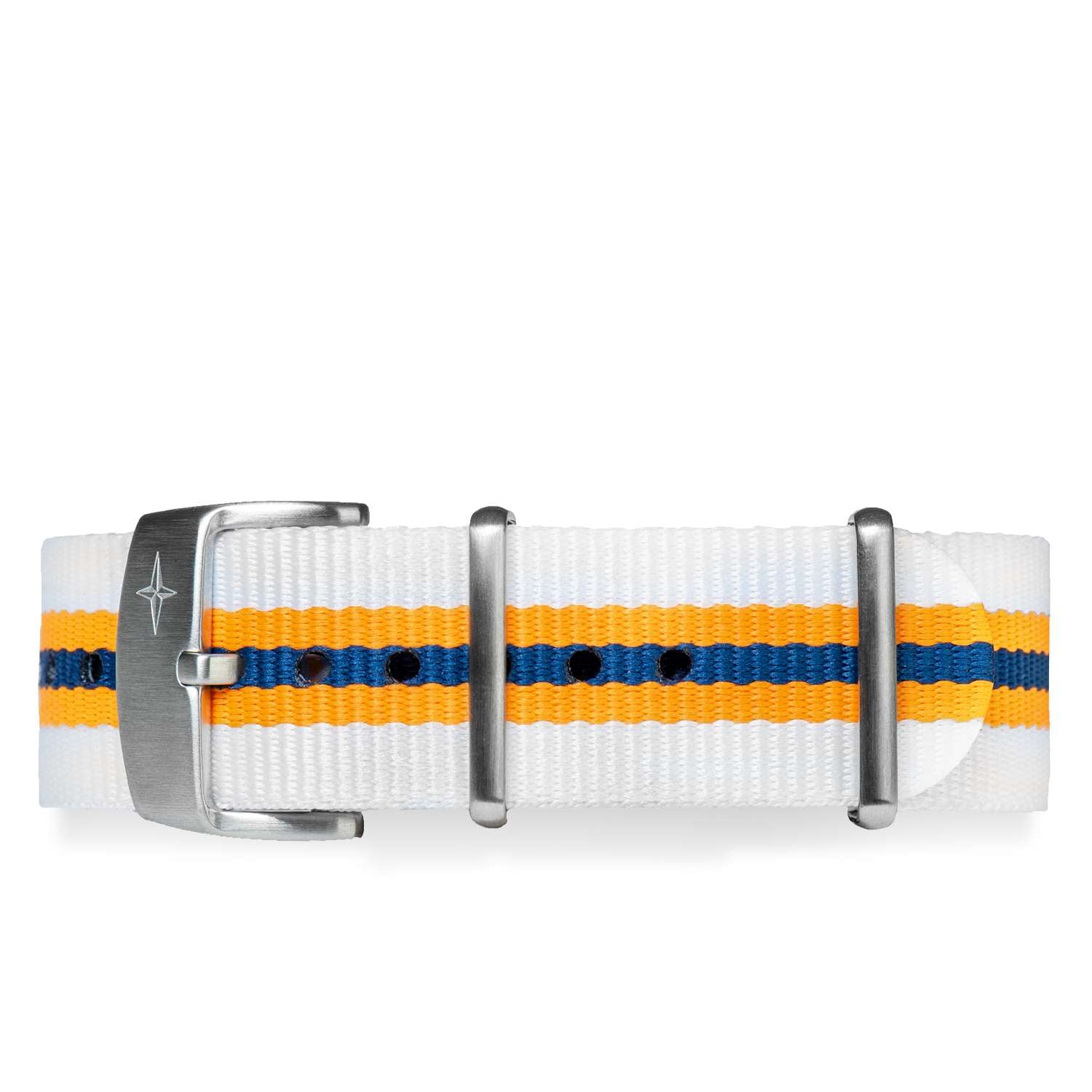September 14, 2021
The world of watches has changed a lot over the years: today, when you look at the wrists of watch wearers, you notice that a great many are wearing one type or another of diver watch, perhaps wearing a suit and tie to a business meeting. Yet, there was a time, and it was not that many years ago when diver watches were reserved for underwater activities!
So we want to explore the depths of diver watches and discover their history, their origins. Are you ready to dive into this sea?

What is a dive watch?
A diver watch (this is the correct term) is a watch made for the needs of divers. They can use whatever watch movement (that is, being mechanical watches, quartz watches, or whatever), but the main feature of a diver watch is that it is highly water-resistant. However, not all water-resistant watches are diver watches, as we shall see!
Other elements of the timepiece, aside from this feature, make a water-resistant watch "just right" for the specific needs of the diver. Among them, a unidirectional rotating bezel, luminous paste on the hands and hour markers, and other details make a watch meet the characteristics of a diver watch.
Diver watches have evolved throughout history, starting with the technological evolution that involved cases. Rolex was the first manufacturer to invent and patent in 1931 a type of watch case, the Oyster, which was completely waterproof, thanks to a system of screw-down closures on the case back and crown, and rubber gaskets that prevented water from entering the watch.
These first water-resistant watches were then developed for military purposes to equip the world's first naval special forces. Among all, we can remember the Italian frogmen active in the Second World War, who employed watches marked Panerai (but actually developed on a Rolex base).
After the war, the evolution of recreational diving and its extension towards the civilian public prompted manufacturers to make timepieces for this purpose. The first watches of this type, launched in 1953, were the Rolex Submariner and Blancpain Fifty Fathoms. The latter was developed following a series of specifications dictated by the French Navy, which laid the technical basis for the standardization of modern diver watches.
The first boom in these watches came when Jacques Cousteau, the first underwater explorer, wore the Fifty Fathoms for his award-winning documentary, "The Silent World." The second and final impetus came from the adoption of a Rolex Submariner ref. 6538 by James Bond, the world's most famous spy, who wore it in his 1962 film Dr. No.
Audiences literally went crazy for this timepiece (and the actor, Sean Connery) and began using it even outside water. Given its great success, many other primary watch manufacturers presented their models, and the diver's watch laid the foundations for its future success, which continues to this day, as stainless as the metal it is made of.
Do divers actually use dive watches?
Technical evolution over the years has meant that the use of diver watches as tools by amateur and professional divers is in sharp decline. Electronic instruments like dive computers do everything mechanical watches were used to do faster and more accurately. However, every self-respecting diver still carries a backup diver watch, precisely because when your life depends on the proper functioning of an instrument, it's best always to have a "plan B" ready.
As we were saying, the great media success of some models of diver watches has made them a favorite even among those who are not passionate about diving: today, most diver watches belong to the so-called category of "desk divers," i.e., watches that are worn for their robustness, practicality and excellent readability of the dial - and why not, also for their smart-casual style that suits every occasion, from the most informal to the most elegant. Just look at Prince William of England, who is never without his Omega Seamaster Professional watch, given to him by his late mother, Princess Diana.

What does ISO 6425 mean on a watch?
ISO (International Standard Organization) is the institution that determines and certifies worldwide standards in the most diverse fields. Each directive issued by ISO that defines a standard has a number - and ISO 6425, introduced in 1996, is the one that applies to diver watches, i.e., watches certified for use underwater at depths of 100 meters or more. This set of requirements covers many fields, among which we can enumerate the following:
- Antimagnetic properties (ISO 764)
This requirement is demanded of both the case and the movement: the watch must withstand exposure to a magnetic field of 4,800 A/m without significant effects on the quartz or automatic watch accuracy.
- Shock resistance (ISO 1413)
In the event of unintentional shock, the watch must be able to work before, during, and after immersion without ceasing to function or being ripped off the wrist through loss of the band
- Resistance to water to a certain depth
The entire watch must show no leaking or fogging after prolonged immersion in water to the depth indicated on the dial plus 25% and ensure the proper functioning of its mechanism
- Resistance to water pressure
The watch must continue to function normally when subjected to water pressure (especially the second hand to check its operation)
- Feature a preset time indicator device
The watch must have an indicator that can signal the time elapsed since an event, i.e., the start of the dive. Typically this is a unidirectional rotating bezel.
- Be readable in complete darkness
The watch must be able to show time indication with hands and markers even in total darkness, and its movement must be visible, typically via the second hand
All watches that comply with every point of this directive can claim to do so in their documentation. But only those that pay to undergo an expensive official test can boast the name “diver watch” or equivalent inscribed on the dial.
This means that many watches may comply with all of these points, but their manufacturers have chosen not to pay the cost of the official testing. Therefore the timepieces cannot bear the official wording "diver watch," "plongeur," or similar, on the dial. So, the best thing to do when you buy a diver watch and want to be sure that it meets these requirements is to consult the official documentation that accompanies the timepiece carefully.

What is the rotating bezel on a watch for?
The unidirectional rotating bezel is one of the most apparent features of a diver's watch. However, unlike other watch models mounting it, like pilots watches, it must have a unidirectional movement for a particular reason.
The diver, for safety reasons, must be able to accurately determine the exact moment of the start of his dive. If this does not happen, he could find himself in trouble with the air supply. Therefore, you can quickly determine the time spent underwater by marking the precise minute with the rotating bezel.
Suppose a problem occurs, and this indication moves for any reason. In that case, it is essential that this happens counterclockwise, i.e., showing a time earlier than the actual time, to ensure adequate underwater autonomy.
Once upon a time, the bezels on diver watches carried different indications, including references to specific decompression tables for ascending to the surface. The main problem is that these tables were inaccurate and, therefore, made obsolete by technical progress. This is the reason why they no longer appear on watches since ISO 6425 became widespread.

How to use a diver watch?
The simplest answer is to wear it and dive! But rarely are the most straightforward answers comprehensive. The reality is that watches and water are not meant to go well together, and this axiom still holds despite technological advances.
If you wear a divers watch and use it for diving in the water - or even in the pool – you must respect some small rules of behavior to ensure its perfect efficiency over time. The first one to prevent most problems is to remember to screw the crown in well.
We often forget that the crown is the part most subject to water infiltration in any watch since it is used to adjust and wind it. Modern diver watches typically mount an automatic watch movement, so there is no need to recharge them manually through the crown. However, it often happens that it is necessary to adjust the time of the watch. Let's remember that, after having done so, you must not forget to screw the crown back in its place to avoid water from entering the timepiece, with all the damage that may result.
Secondly, we must remember that the gaskets used in watches have a lifetime, and therefore, to ensure a perfect seal, it is necessary to change them every five years when the watch is serviced. Your watchmaker will then subject the timepiece to a leak test under water pressure to verify the perfect efficiency of your timepiece even in operational conditions.
It would be best if you did not forget that, although diver watches are - basically - tool watches, they must always be cared for and maintained with a bit of attention. For example, if used in saltwater or in a swimming pool (which is disinfected with chemical agents containing chlorine, very aggressive for the seals), they should be rinsed in warm freshwater with care, scrubbing with an old toothbrush in the most hidden areas to remove traces of salt and sand and then dried with a soft cotton cloth. This will help keep them in perfect working order and improve your automatic watch lifespan.
Lastly, remember that with heat, the metal expands, and water resistance could be compromised. So, never wear your diver watch in a sauna or steam room!

Why are diver watches so expensive?
Well-made watches cost money, but this is true for any quality item, especially if the quality is connected with strength and durability. In addition, compared to traditional timepieces, which do not have to withstand the effects of water, dive watches have to comply with a whole series of specific requirements that require the use of materials and technical solutions more expensive than the norm.
To mention a couple of them, traditional watches generally have pressure case backs and crowns, while in diver watches, these are screwed in. The crystals must have particular characteristics, both in composition and sealing, and usually are thicker than traditional watches and sometimes reinforced with sealing rings. In addition, the straps must also be adapted to the characteristics of the watch and often are made of stainless steel as the cases.
This means that, on average, a diver's watch costs more than a water-resistant watch of the same characteristics, just as the latter costs more than a watch with average water-resistance - usually 30 meters, or 3 bars - a feature that does not require such sophisticated technical details.

Can you wear a diver watch with a suit?
Traditional etiquette would say no, but if we take a look at a typical meeting room, we can conclude that yes, it is possible to wear a timepiece such as a divers watch with a business suit.
Ideally, the most suitable watch with a business suit should be a dress watch, possibly made of fine metal, with a fine leather strap. Still, we also know that this rule changed for good during the 1970s with the introduction of the first luxury stainless steel timepieces by Audemars Piguet and Patek Philippe. Both designed by the pencil of Gerald Genta, the Royal Oak and Nautilus were steel watches with integrated bracelets and cost as much as a gold watch.
Despite a rocky start, they were hugely successful and helped launch the fashion for the so-called luxury sports watch, which endures today. The effect was that manufacturers such as Rolex began offering their tool watches in steel and gold, or gold only, and these became accepted in common use on elegant occasions. After all, even Sean Connery, as James Bond, in the Goldfinger movie wore his Rolex with an impeccable cream-colored tuxedo (which, by the way, was worn under a diving suit).
So, without getting entangled in the rules of etiquette, we can say that wearing a divers watch with an elegant dress is definitely possible: but if you are not Prince William, avoid doing it when you are in a white tie occasion.

Can you wear a diver watch in the pool?
Given that the pool is a scaled-down version of a lake or the sea, environments for which diver watches were invented, everything would suggest yes. And indeed, it is so: a diver watch should have no problem withstanding an environment such as a swimming pool, but you still need to follow some elementary rules of conduct, and above all, remember the difference between diver watches and water-resistant watches.
As we have said, every water-resistant watch (whether diver or not) shows on the dial a maximum depth that can be reached. But this depth is calculated based on static and constant pressure, i.e., as if the watch were immersed in the water attached to a thread that is unwound very slowly until it reaches the marked depth.
But if you - as happens in the pool - dive into the water, the impact with the water causes a dynamic pressure that is much higher than the static one, with the result that it is very common to find angry owners of 30-meter water-resistant watches who go to their watchmaker with a timepiece full of water.
Remember that the average pressure of the water coming out of the pipes at home is about 3 bars, equivalent to about 30 meters of water resistance, and water coming out of a showerhead can reach 4.5 bars. In a swimming pool, diving subjects the watch to higher pressures, and just swimming freestyle imparts the watch to a pressure of about 5 bar.
While not all manufacturers agree with these figures, we prefer to err on the side of caution so that you don't have to regret later and subject your timepiece to an unplanned service.

In Conclusion
Although diving watches are essentially tool watches, born for a specific purpose, and now have a long history of innovation behind them, the water is always a formidable enemy from which to defend themselves with intelligence and care.
Despite their robustness and practicality, diver watches remain regular timepieces and must therefore be treated with care, especially with good periodic maintenance and after exposure to water, to keep them in perfect efficiency.
If you do that, we are sure they will repay you by giving you many great satisfactions!
The Davosa-USA.com website is NOT affiliated in any way with Audemars Piguet, Franck Muller USA, Inc. Richard Mille or Richemont Companies, Seiko, or any other brand which is not Davosa Swiss. Rolex is a registered trademark of Rolex USA. Davosa-USA website is not an authorized dealer, reseller, or distributor for Rolex and is in NO WAY affiliated with Rolex SA or Rolex USA or any other brand besides Davosa Swiss. |

